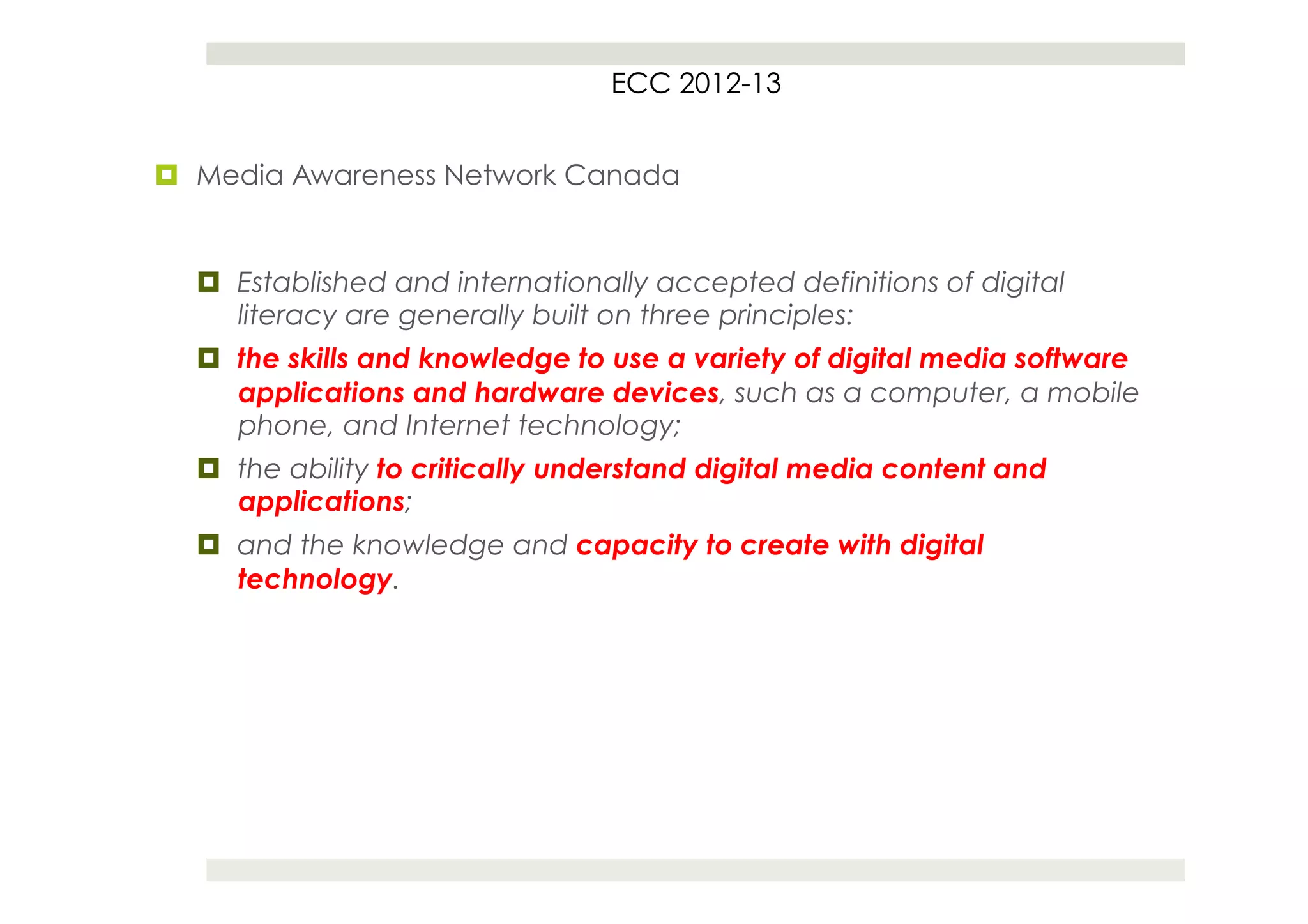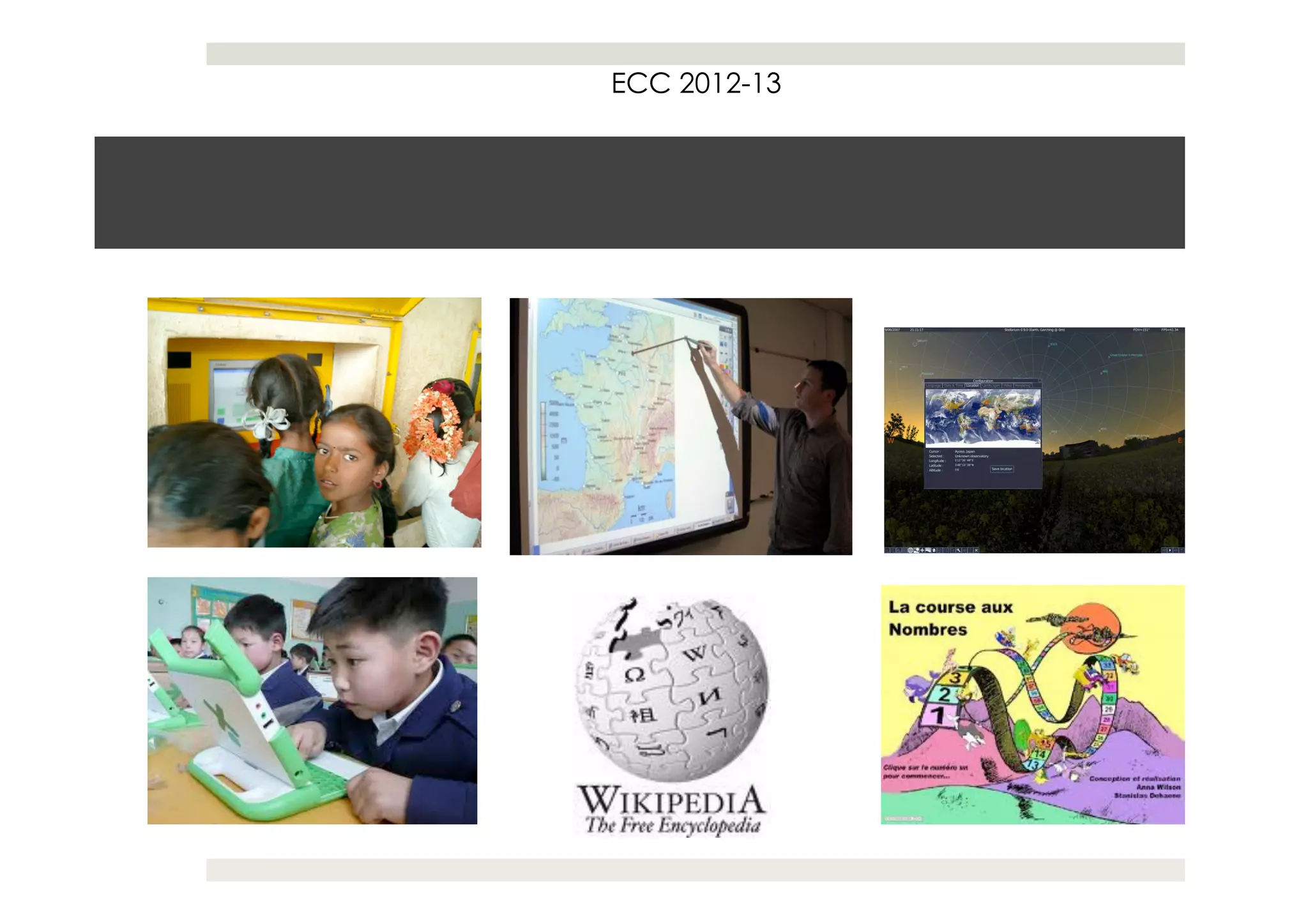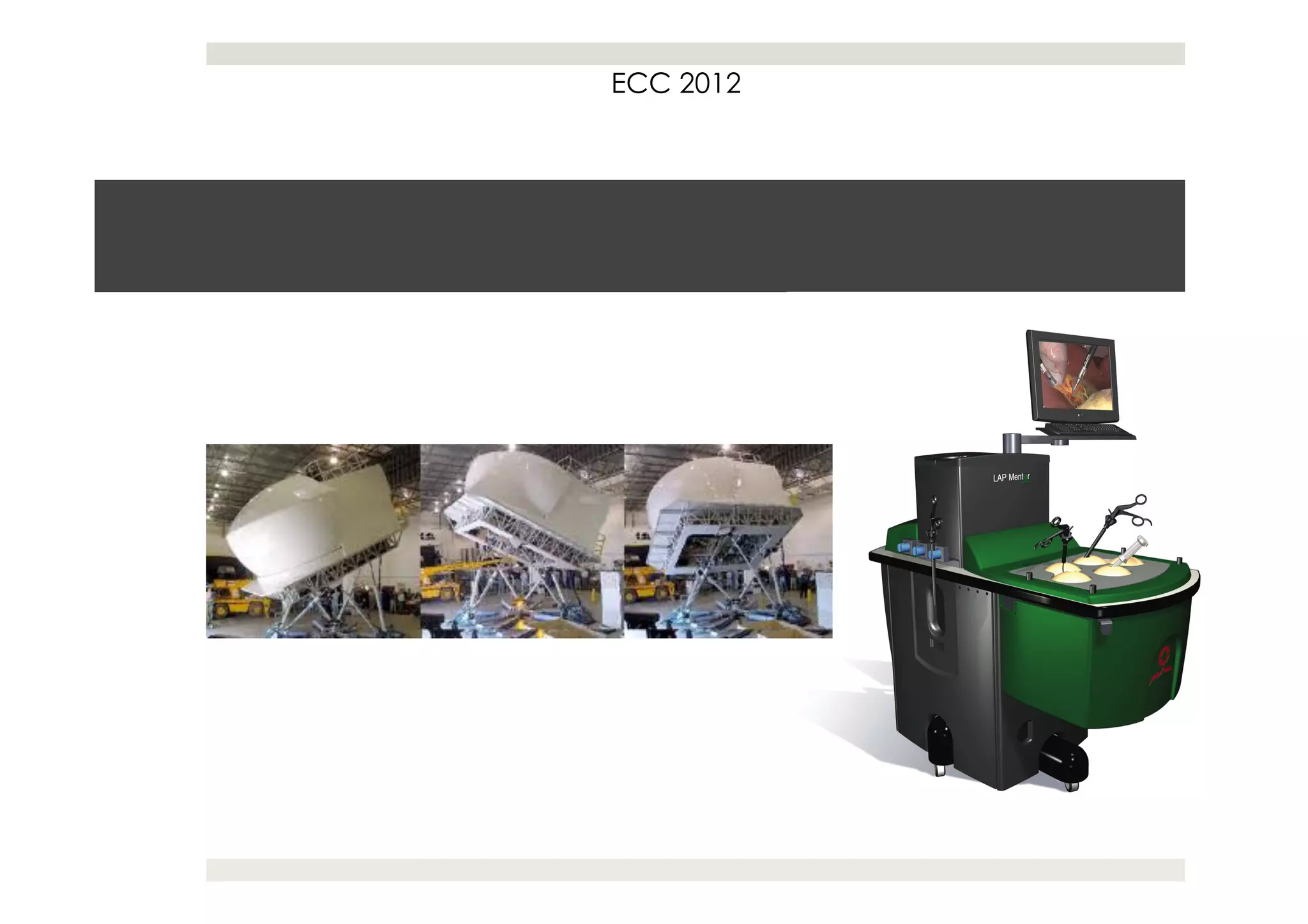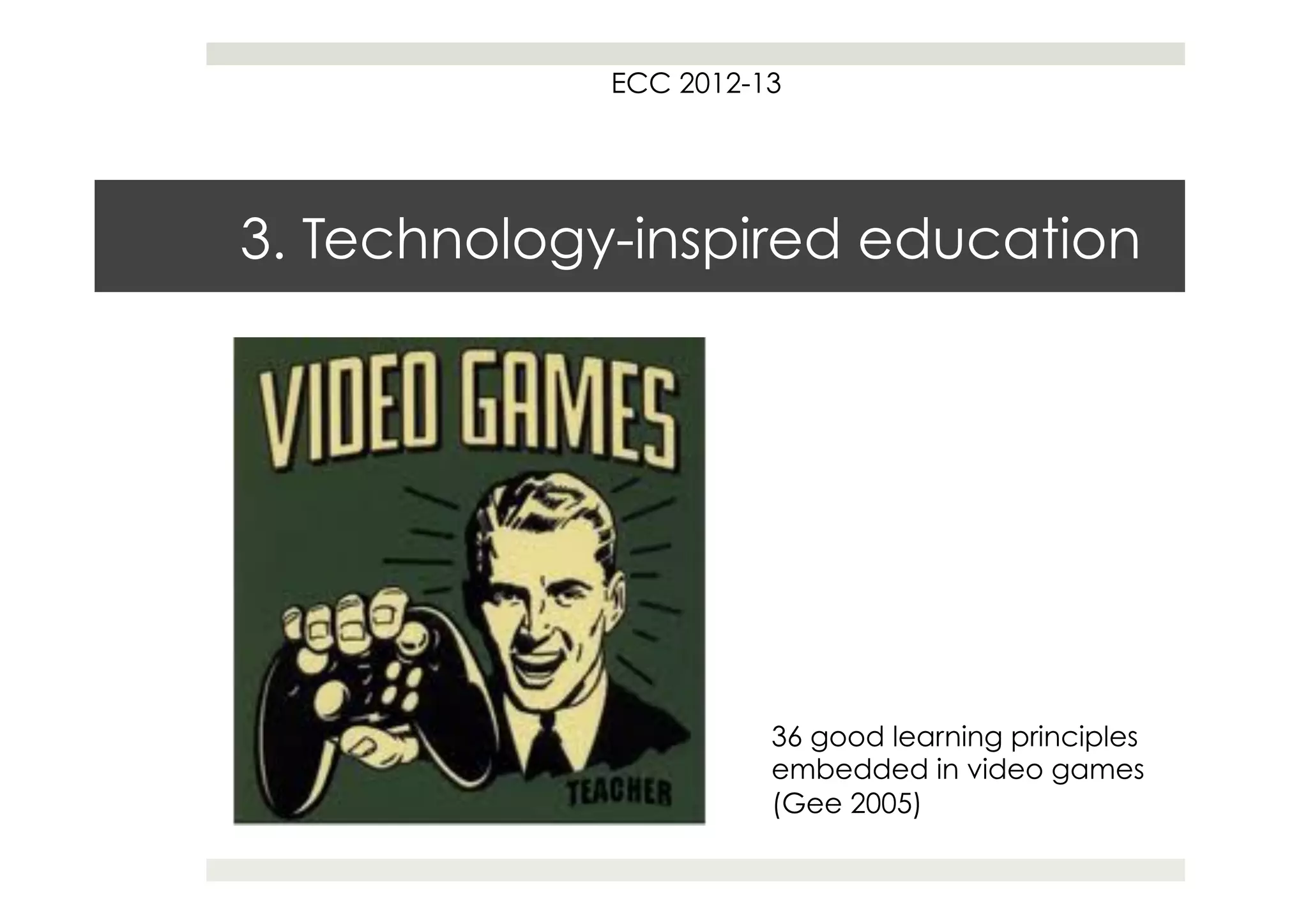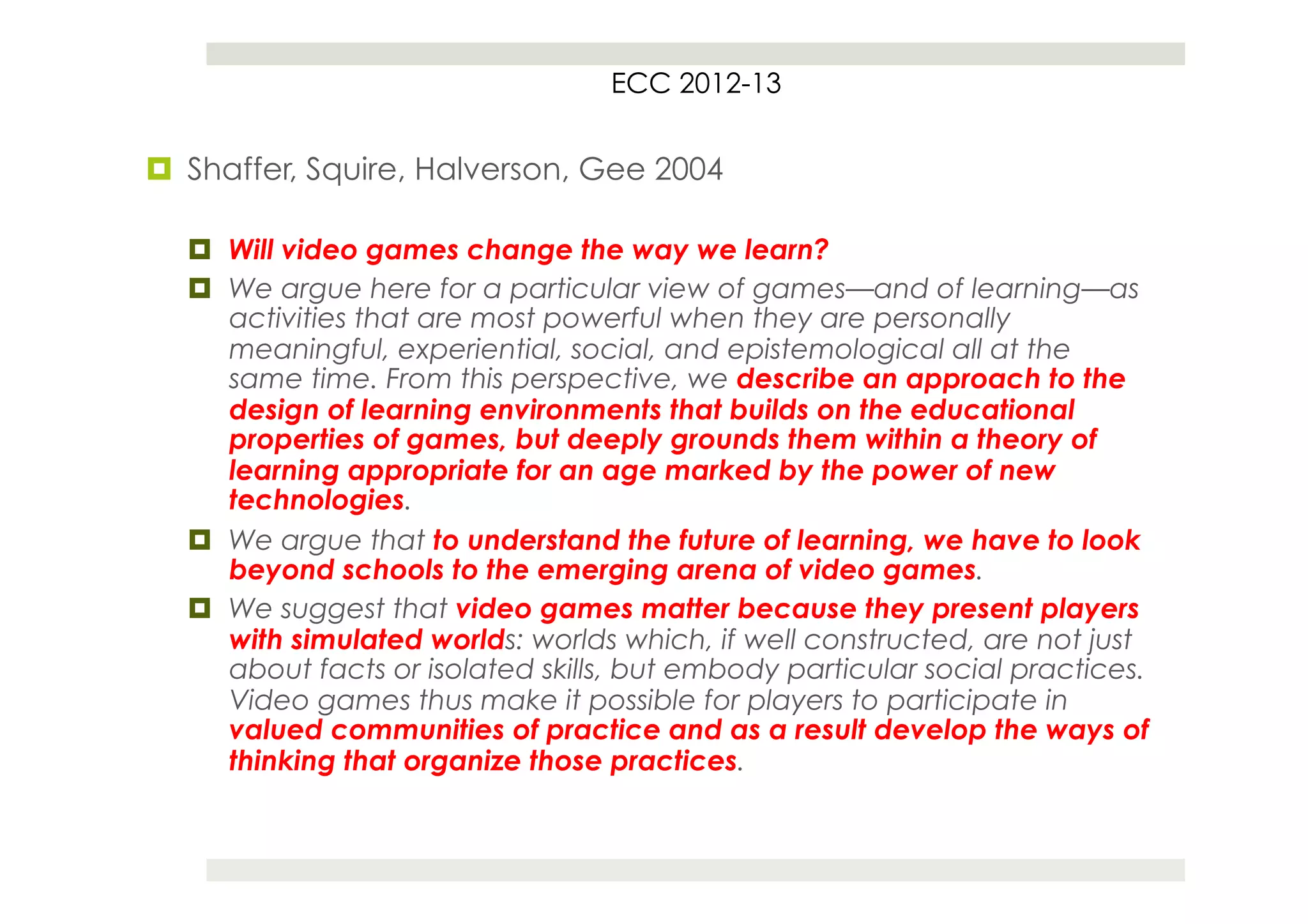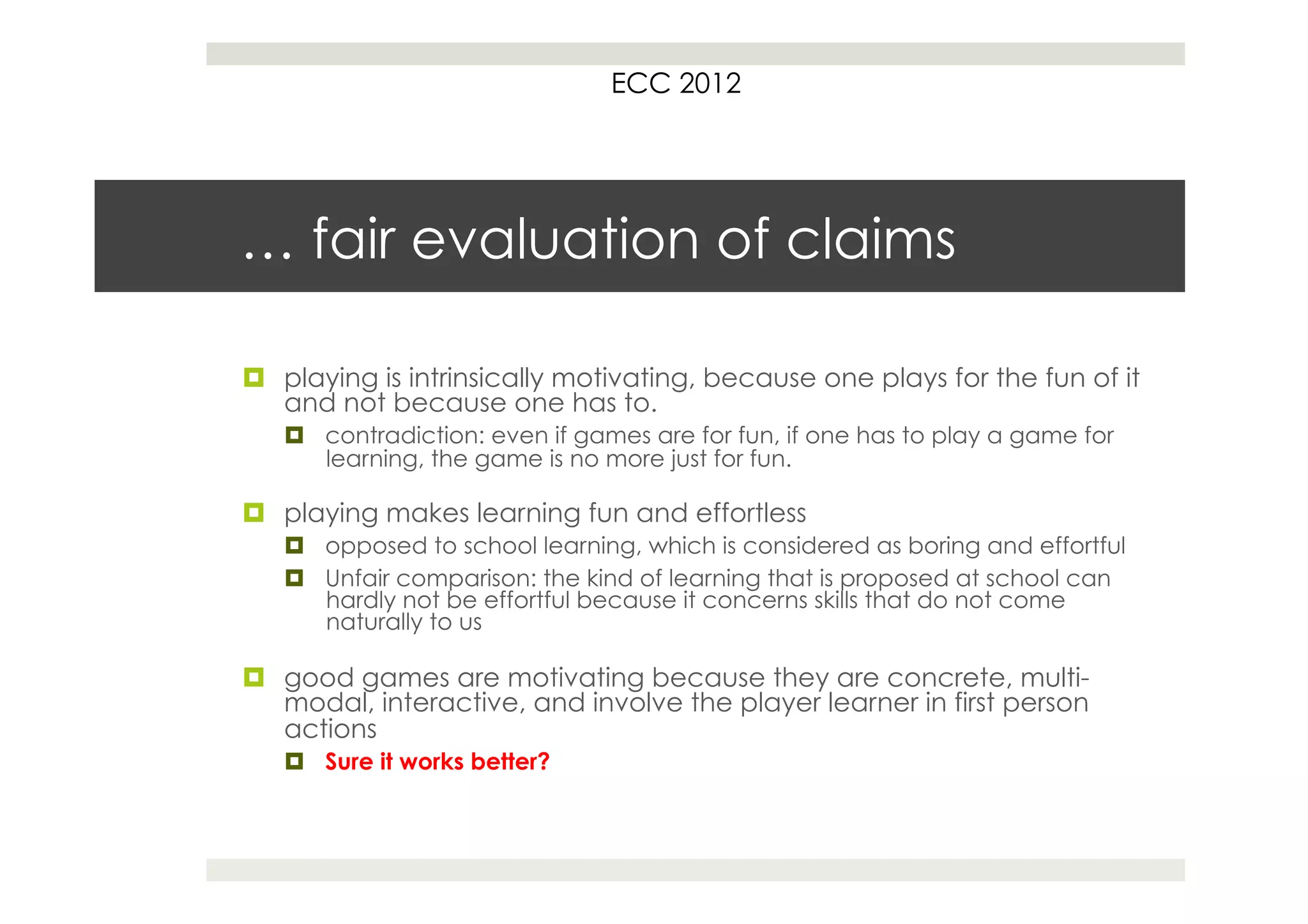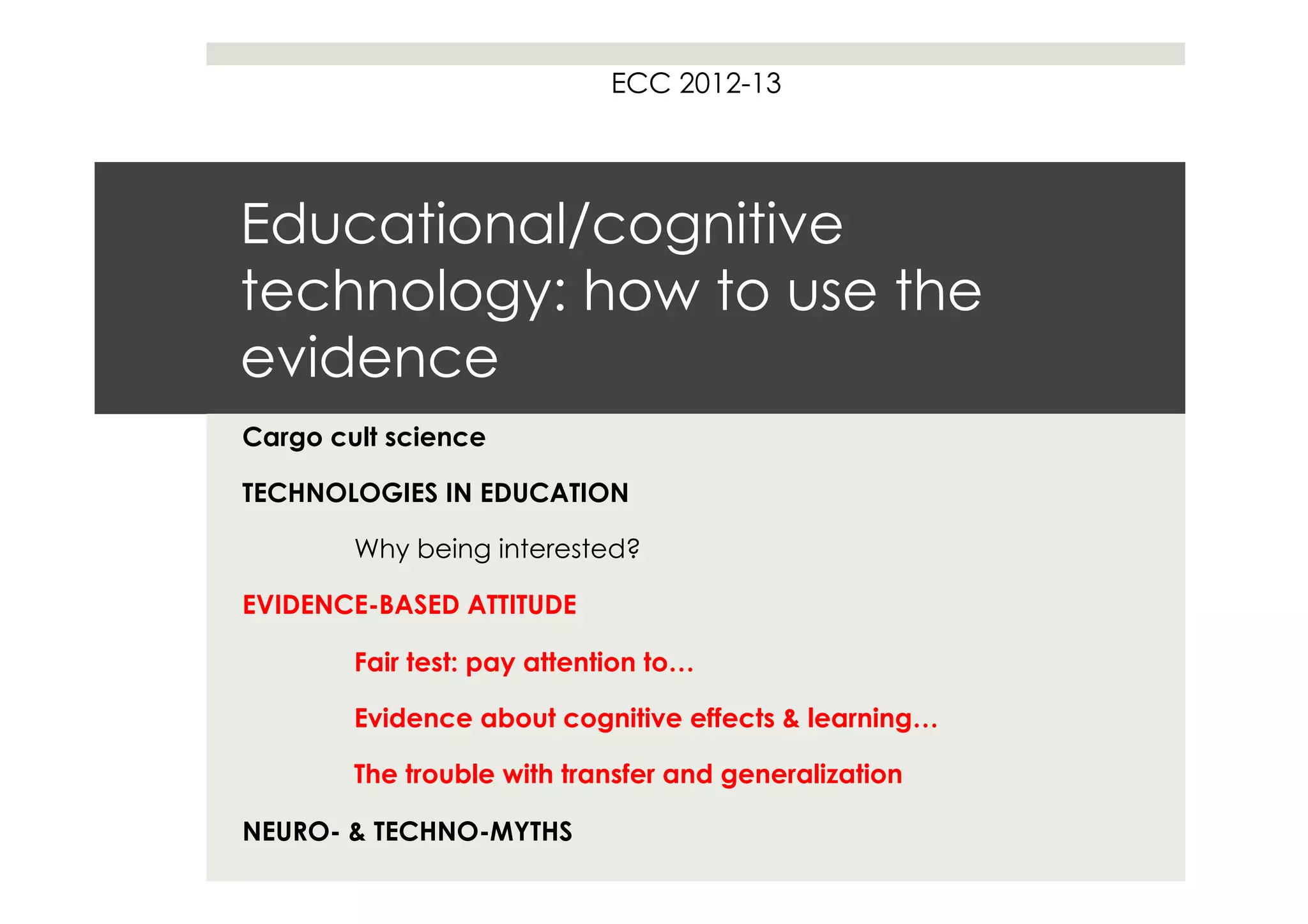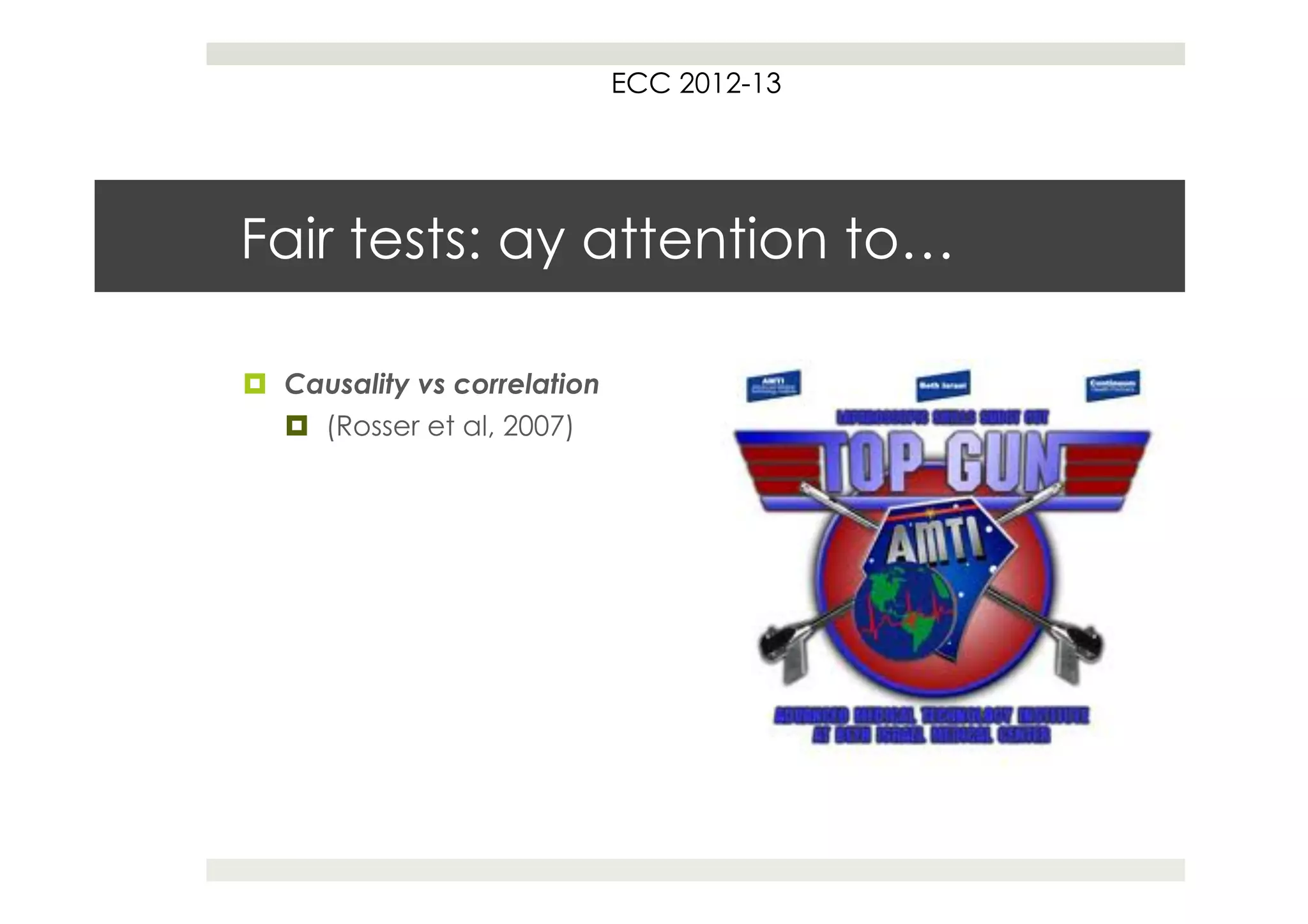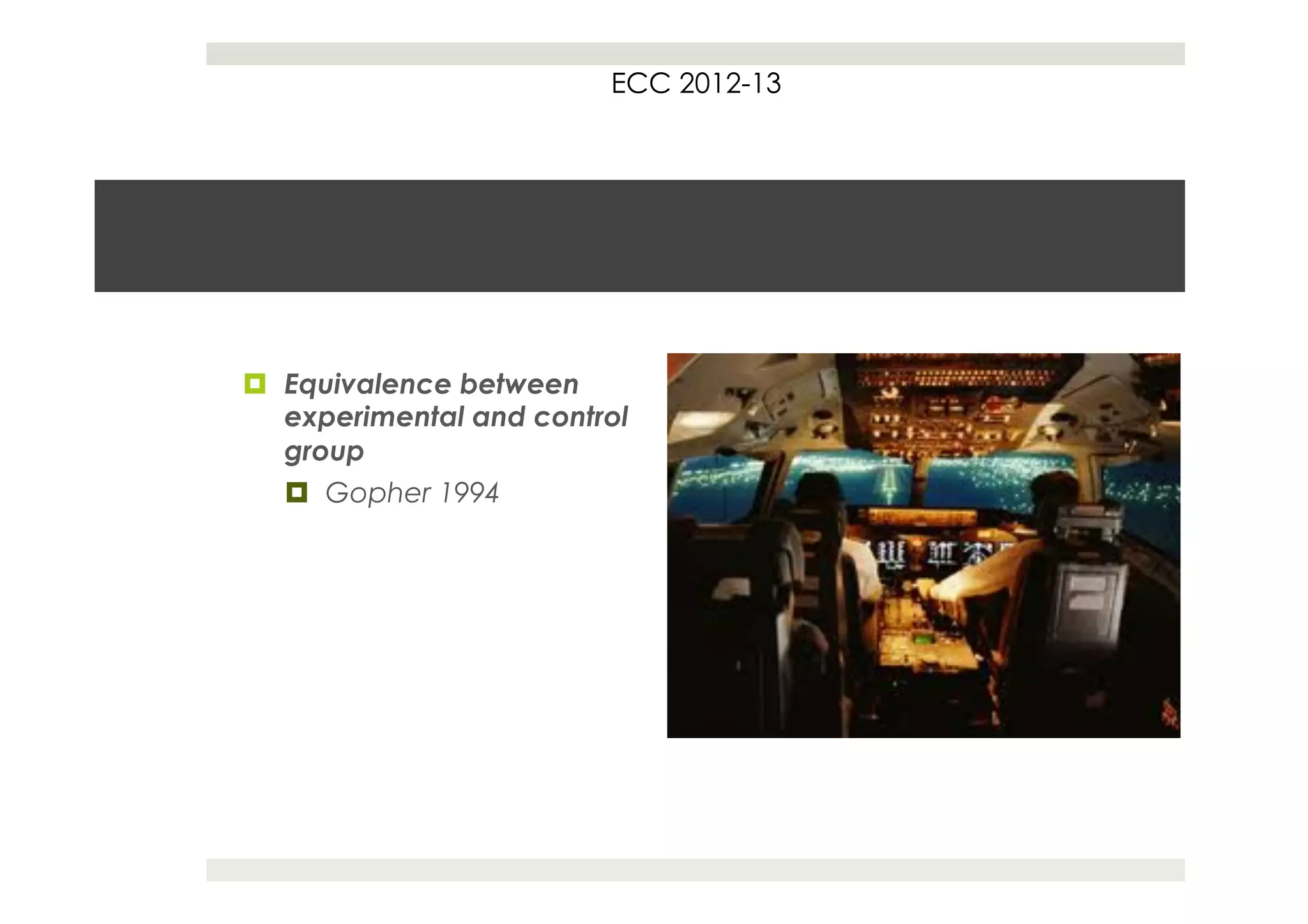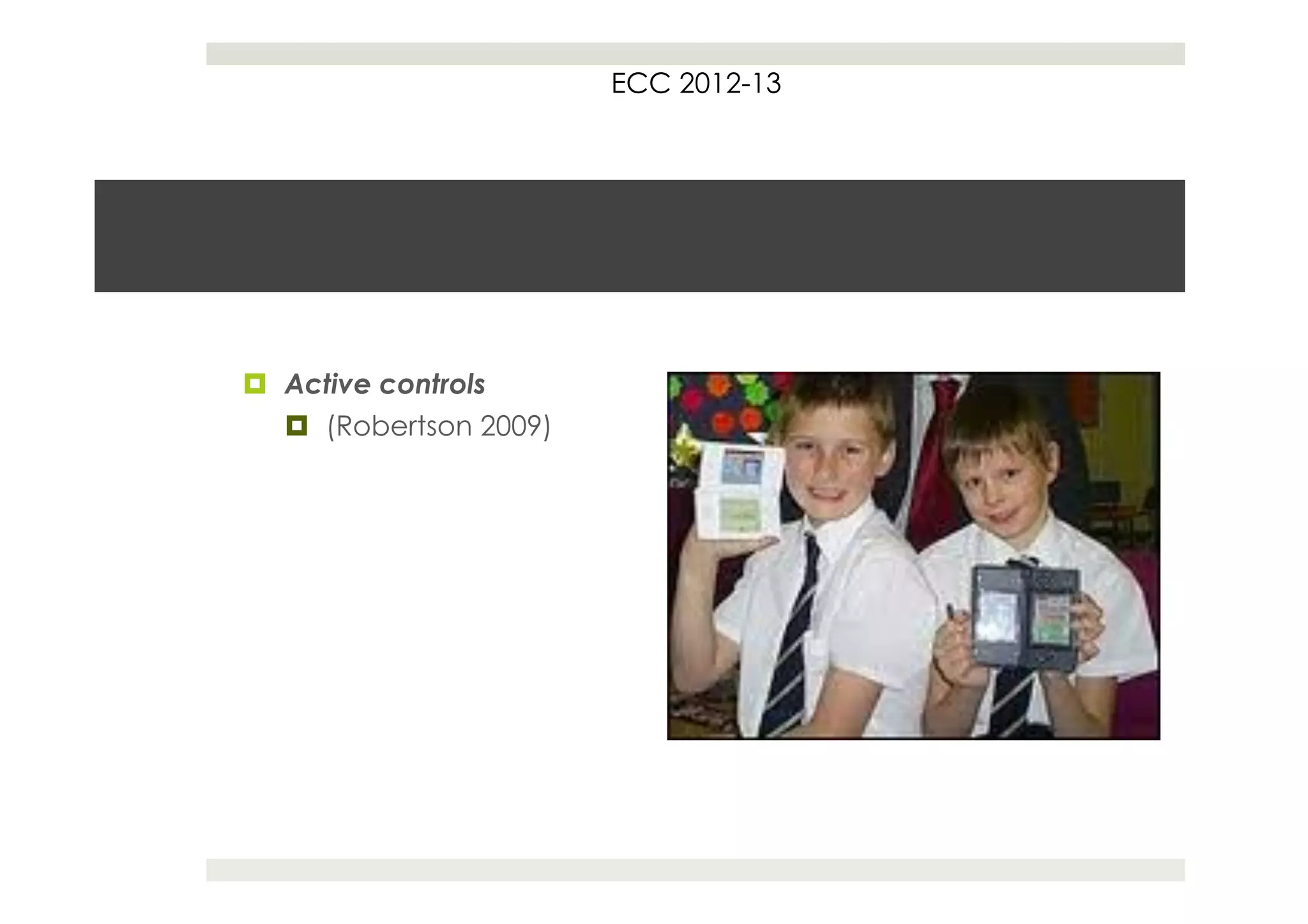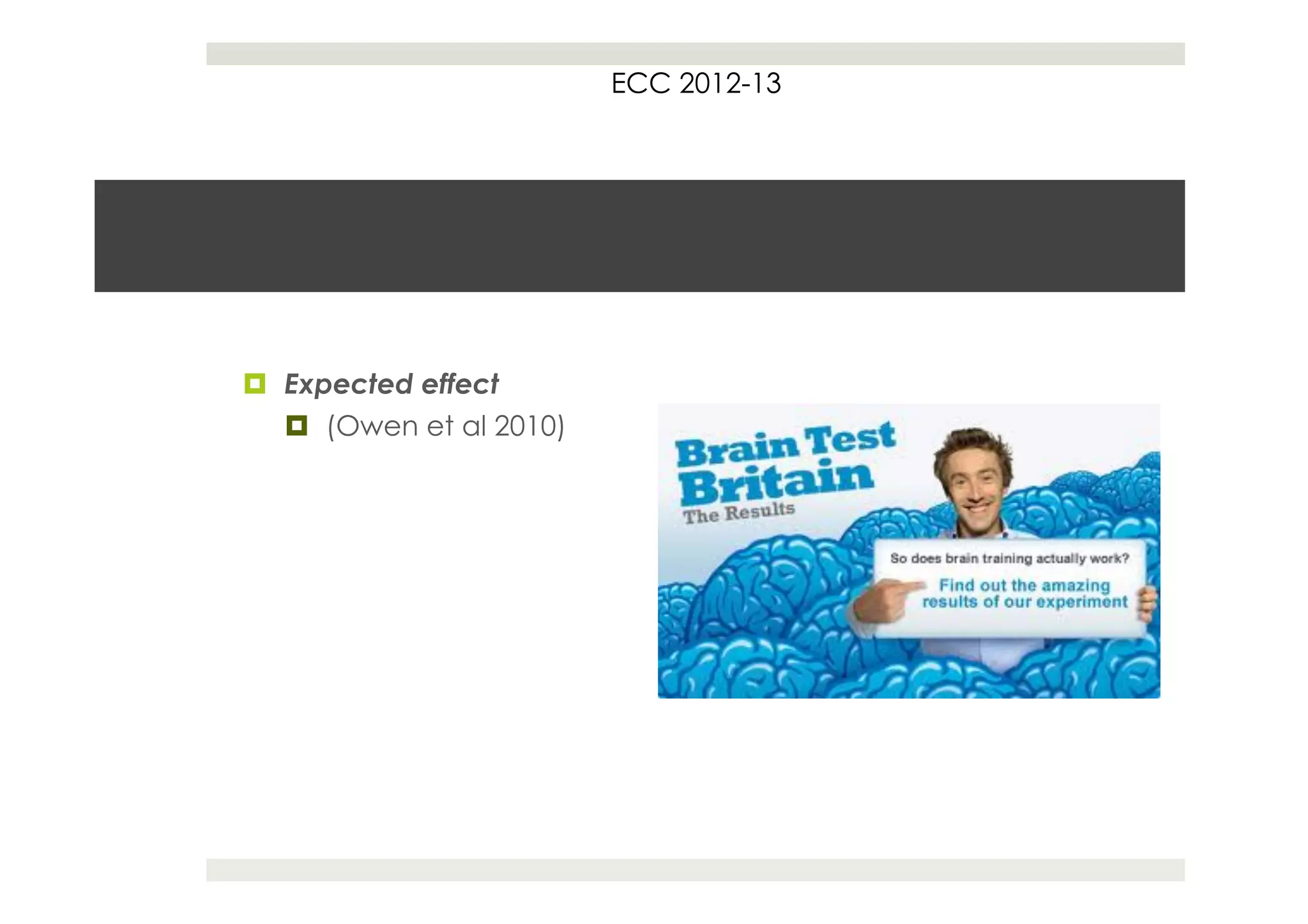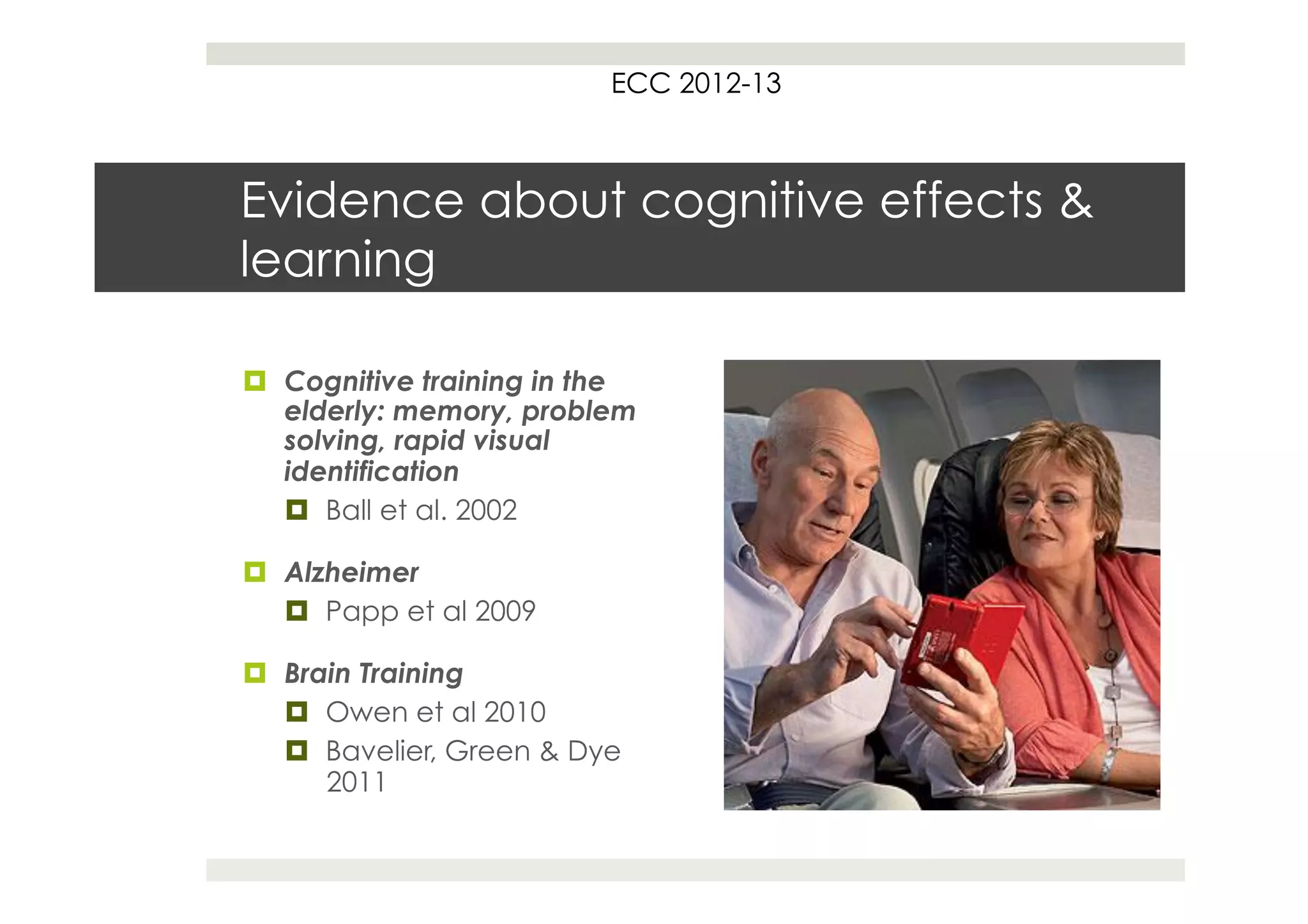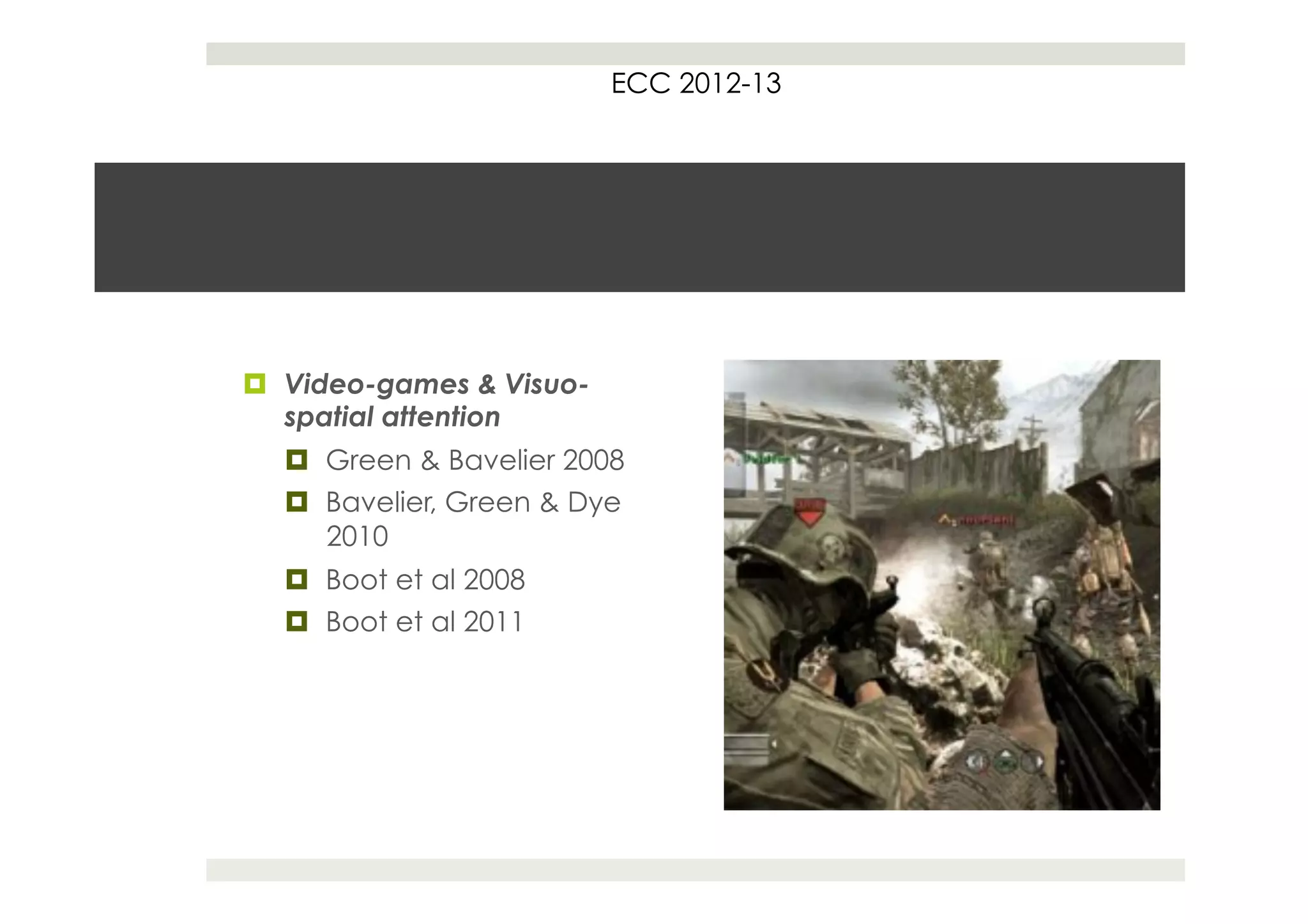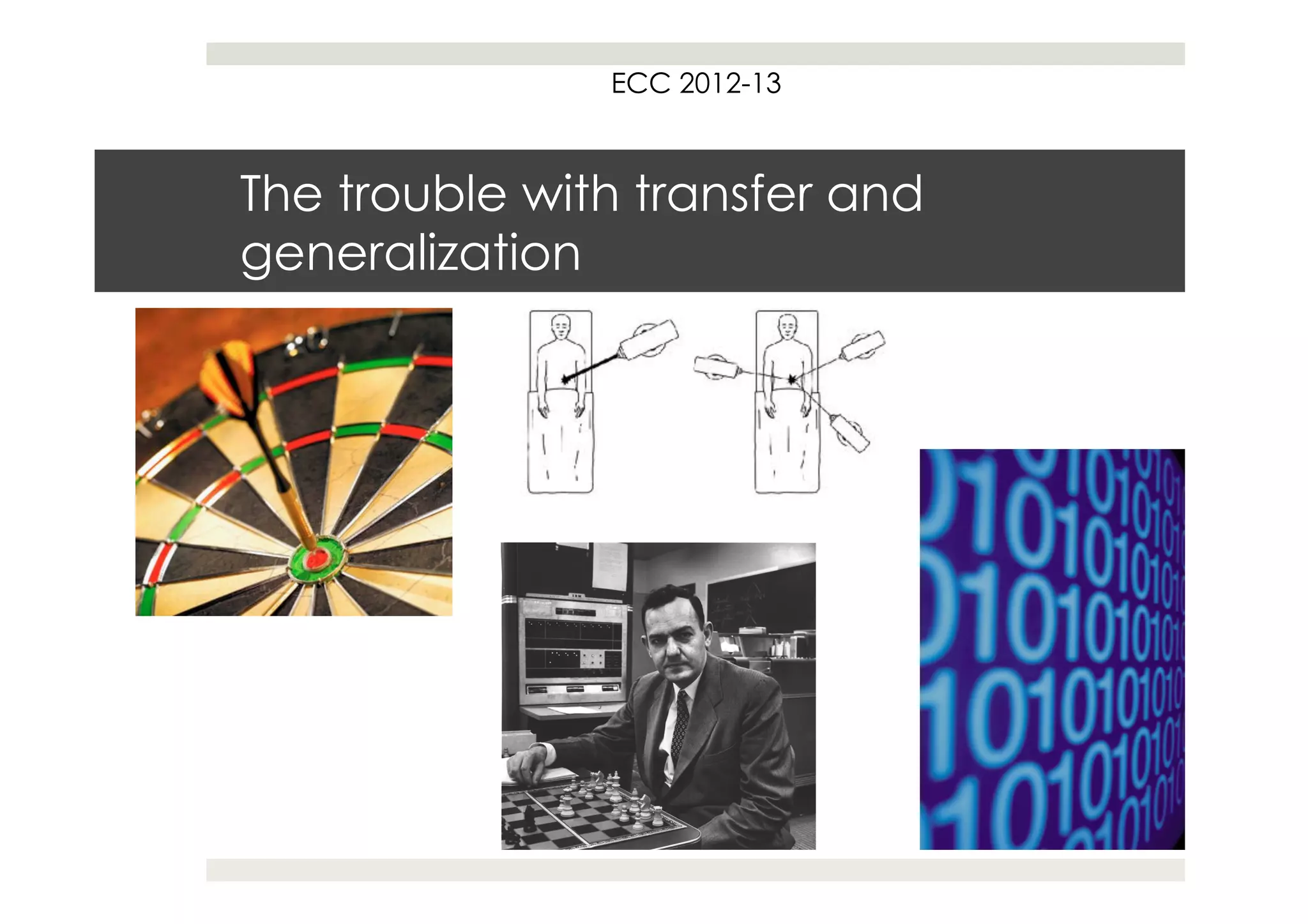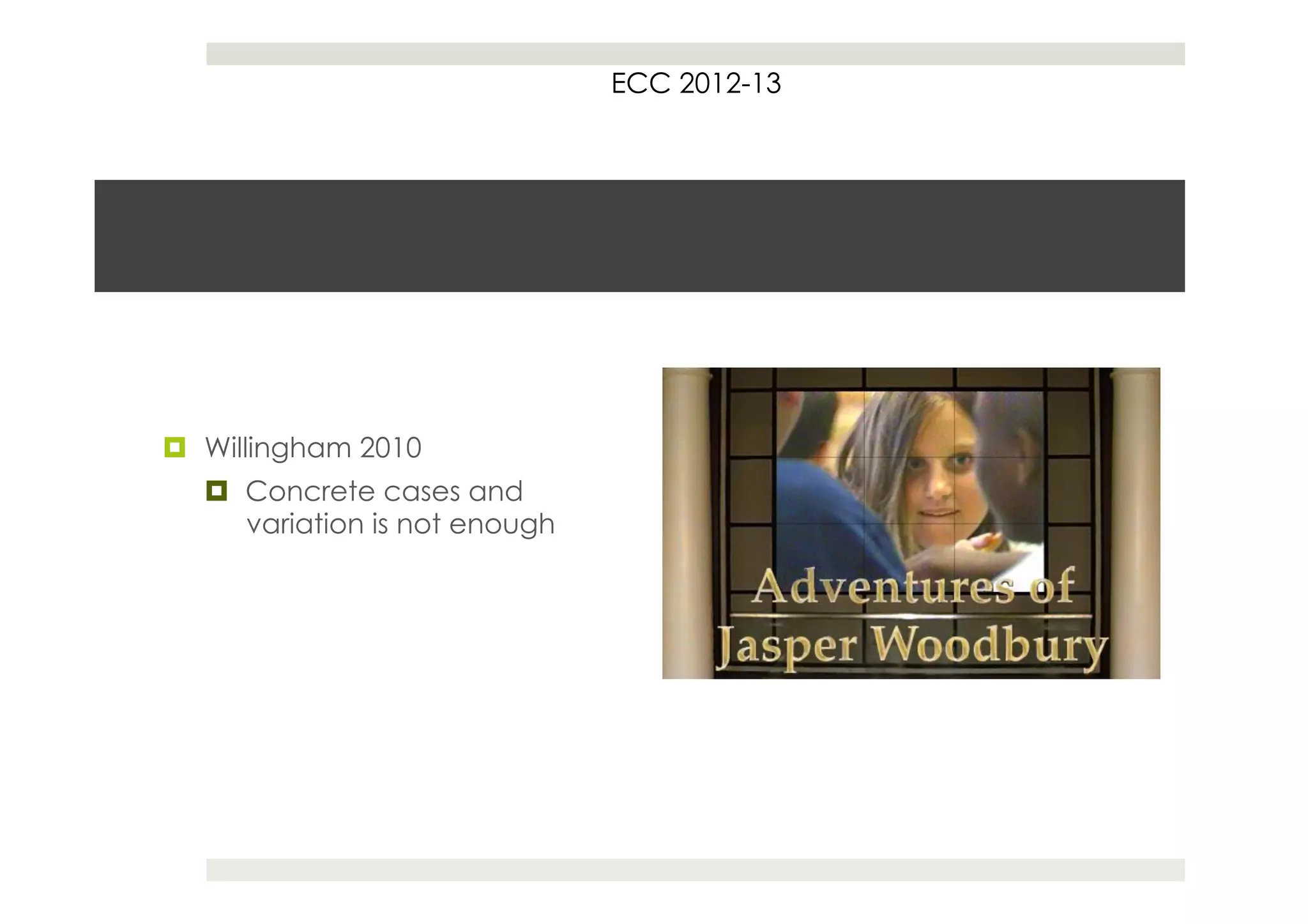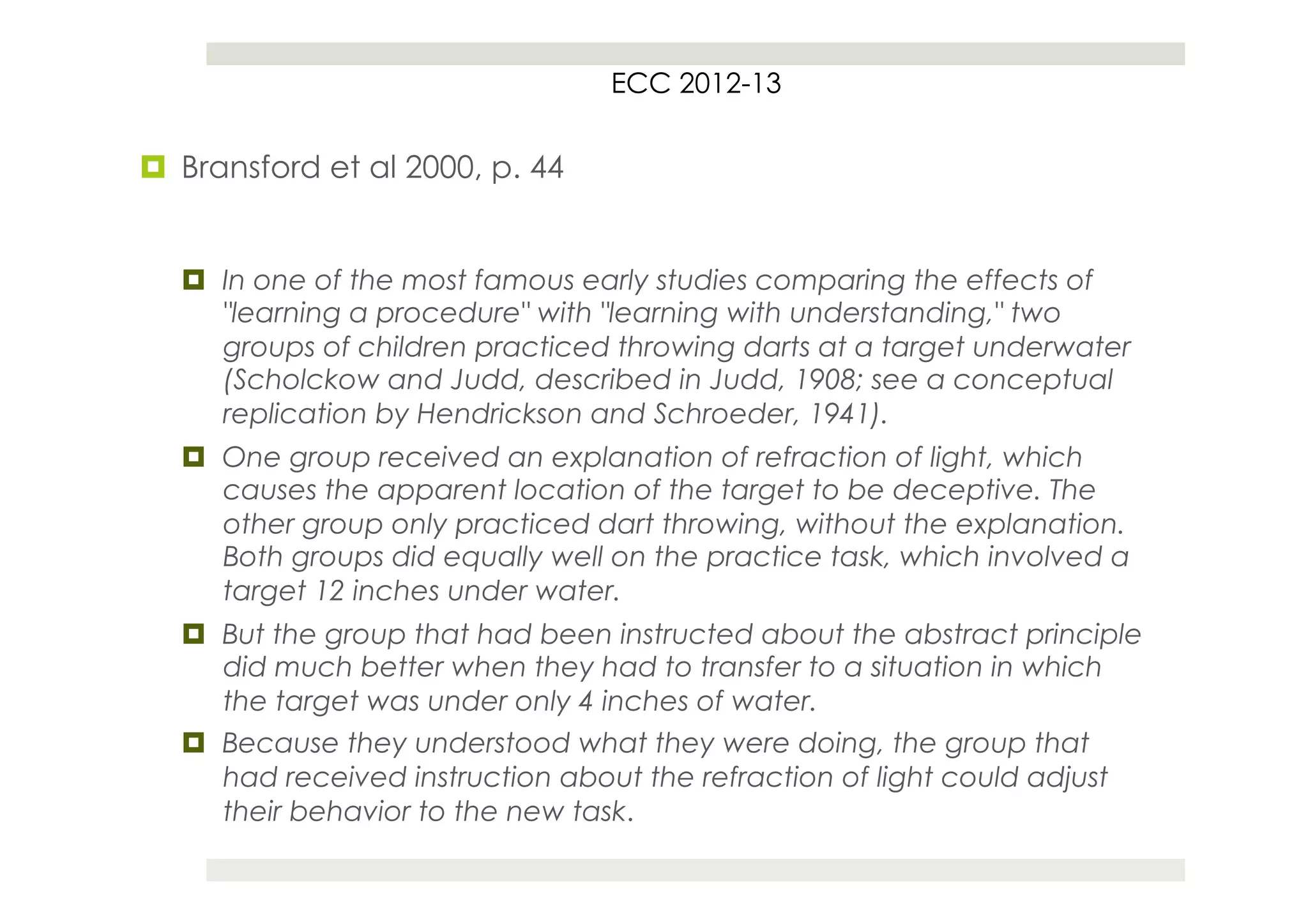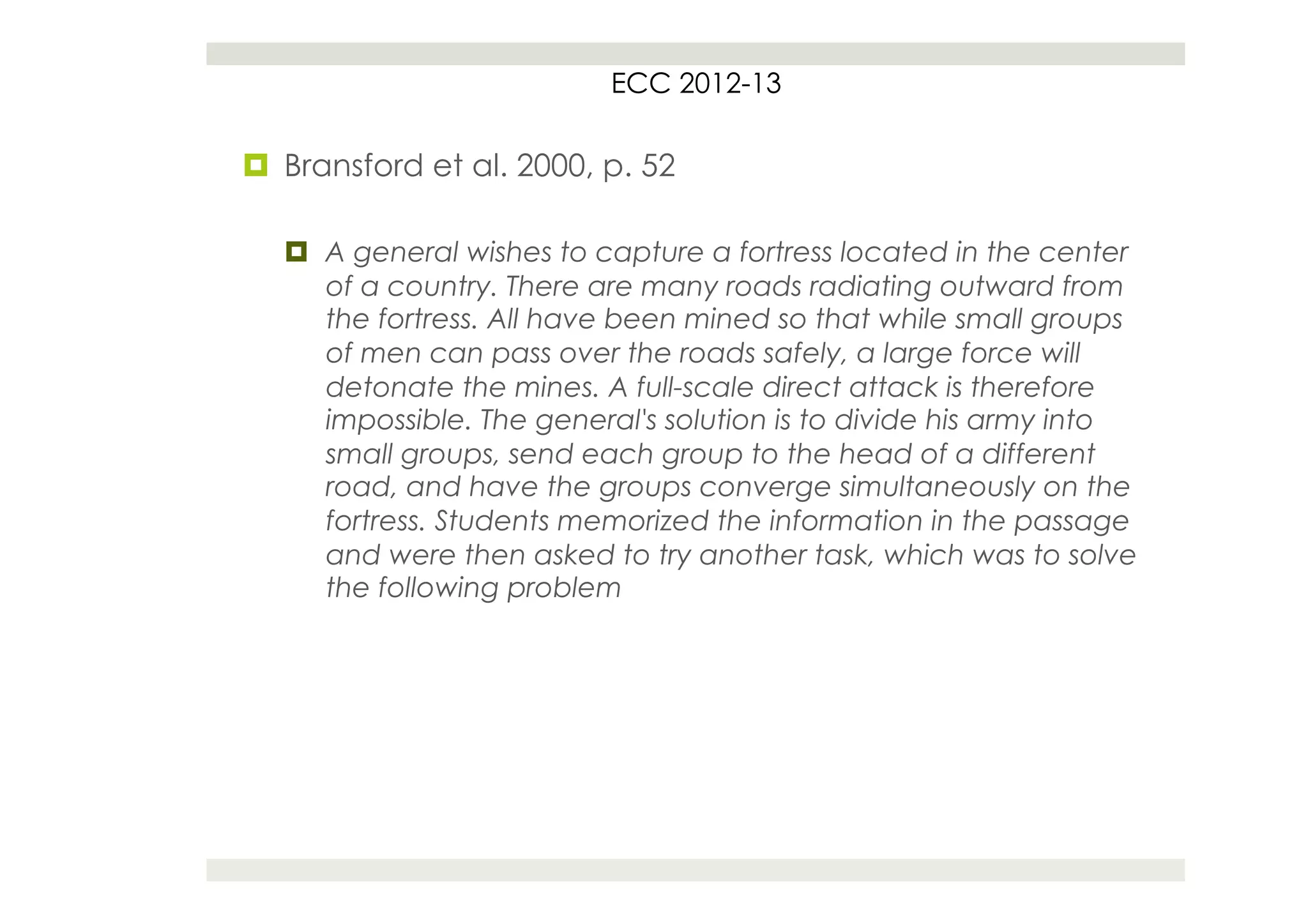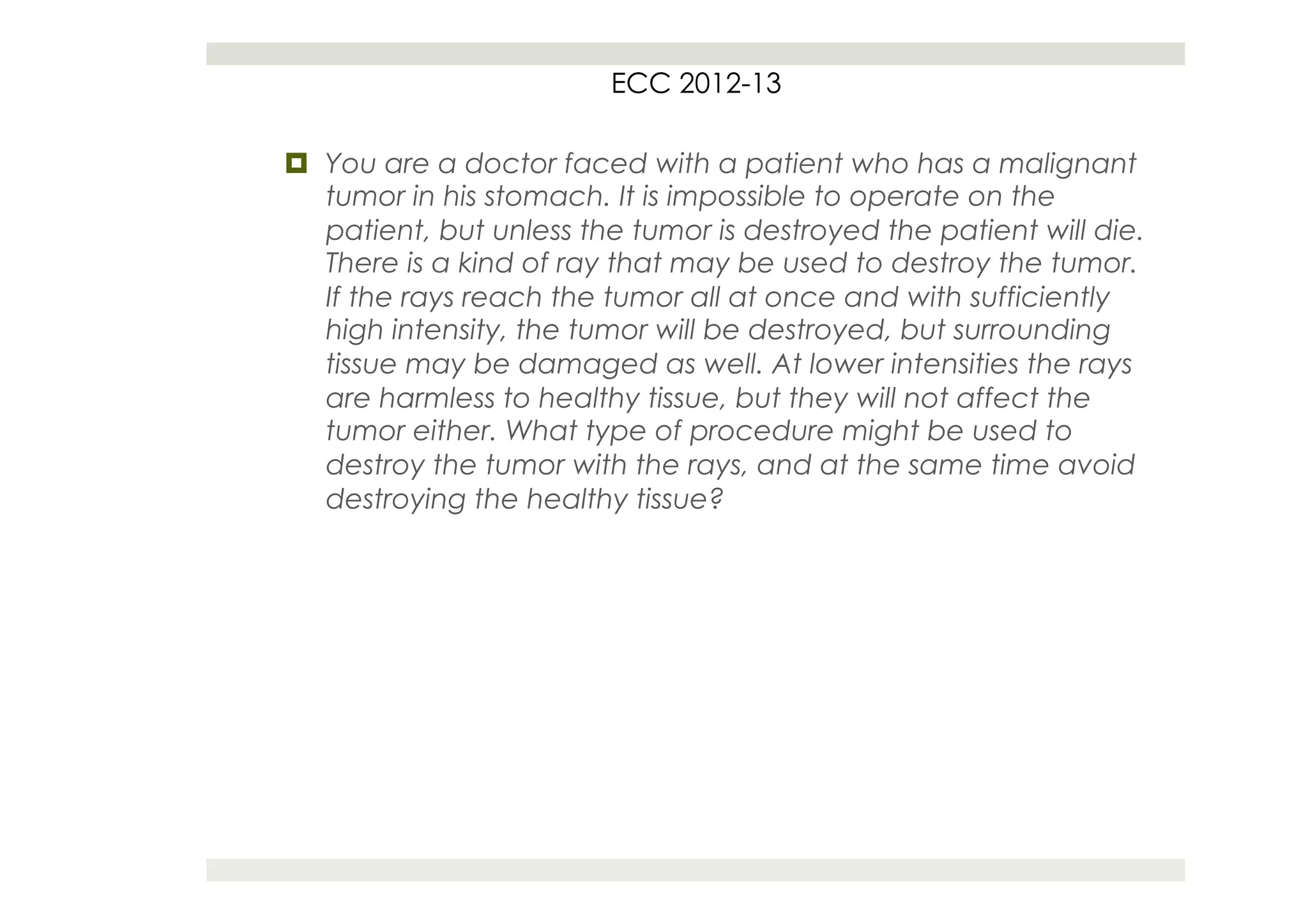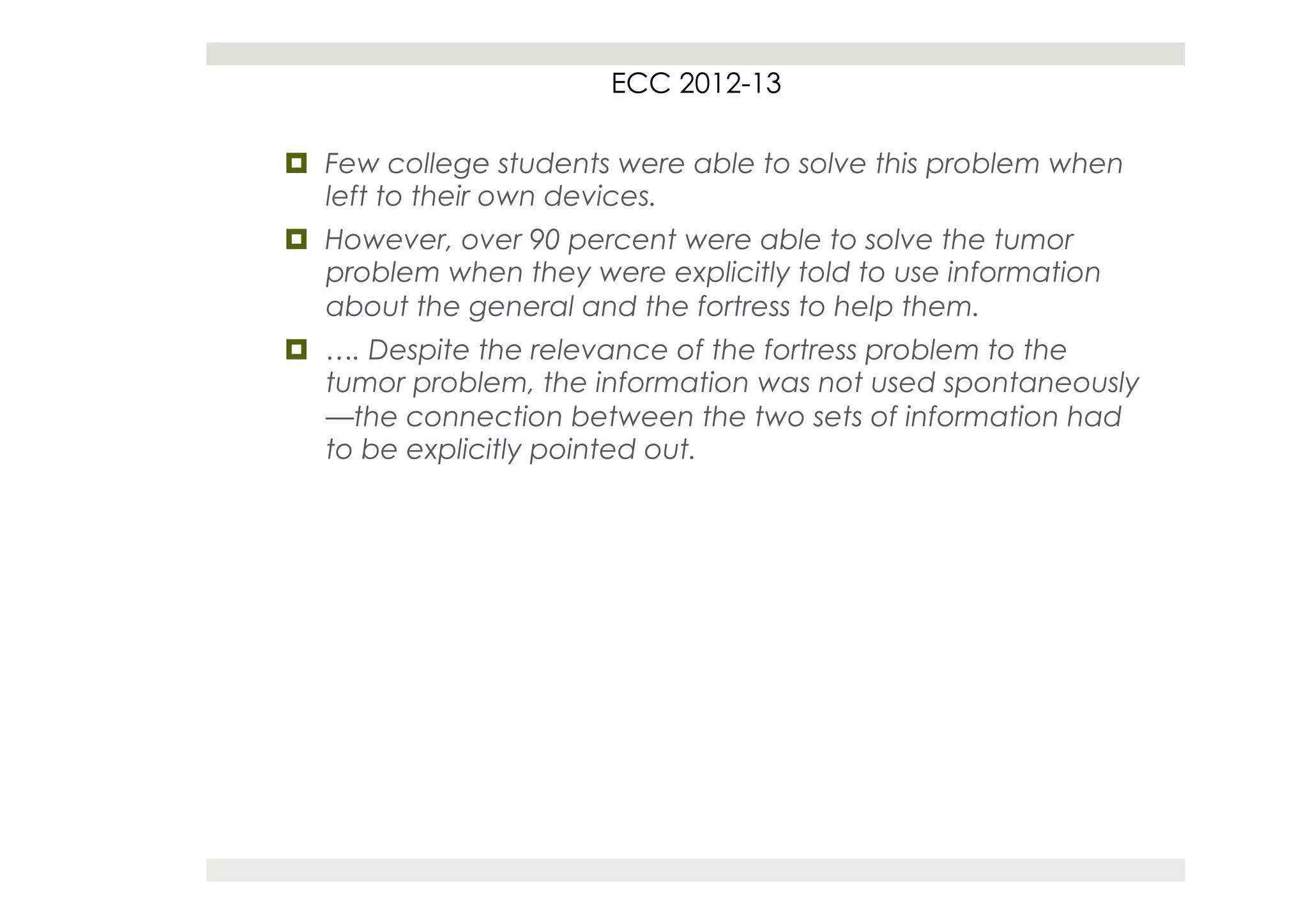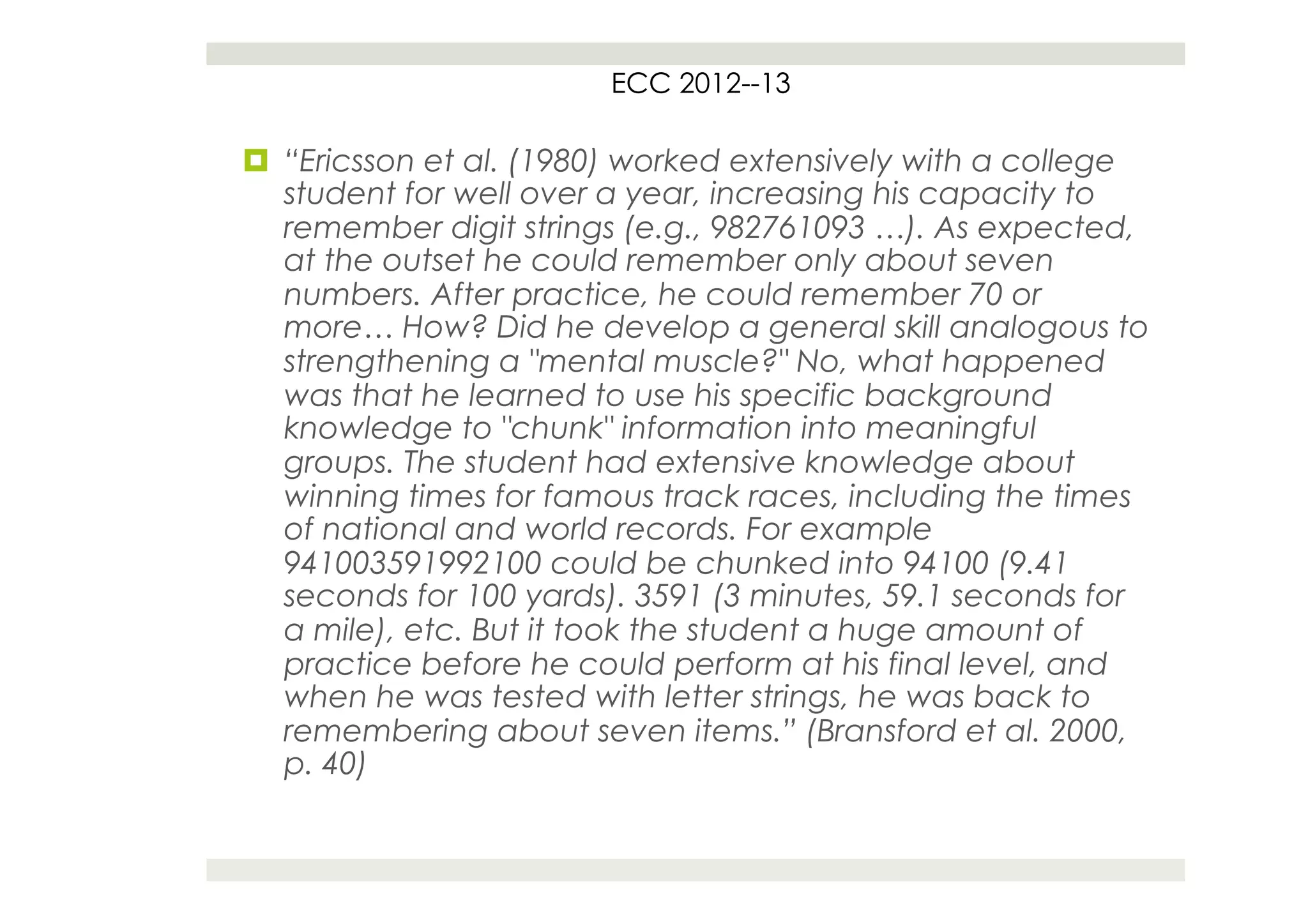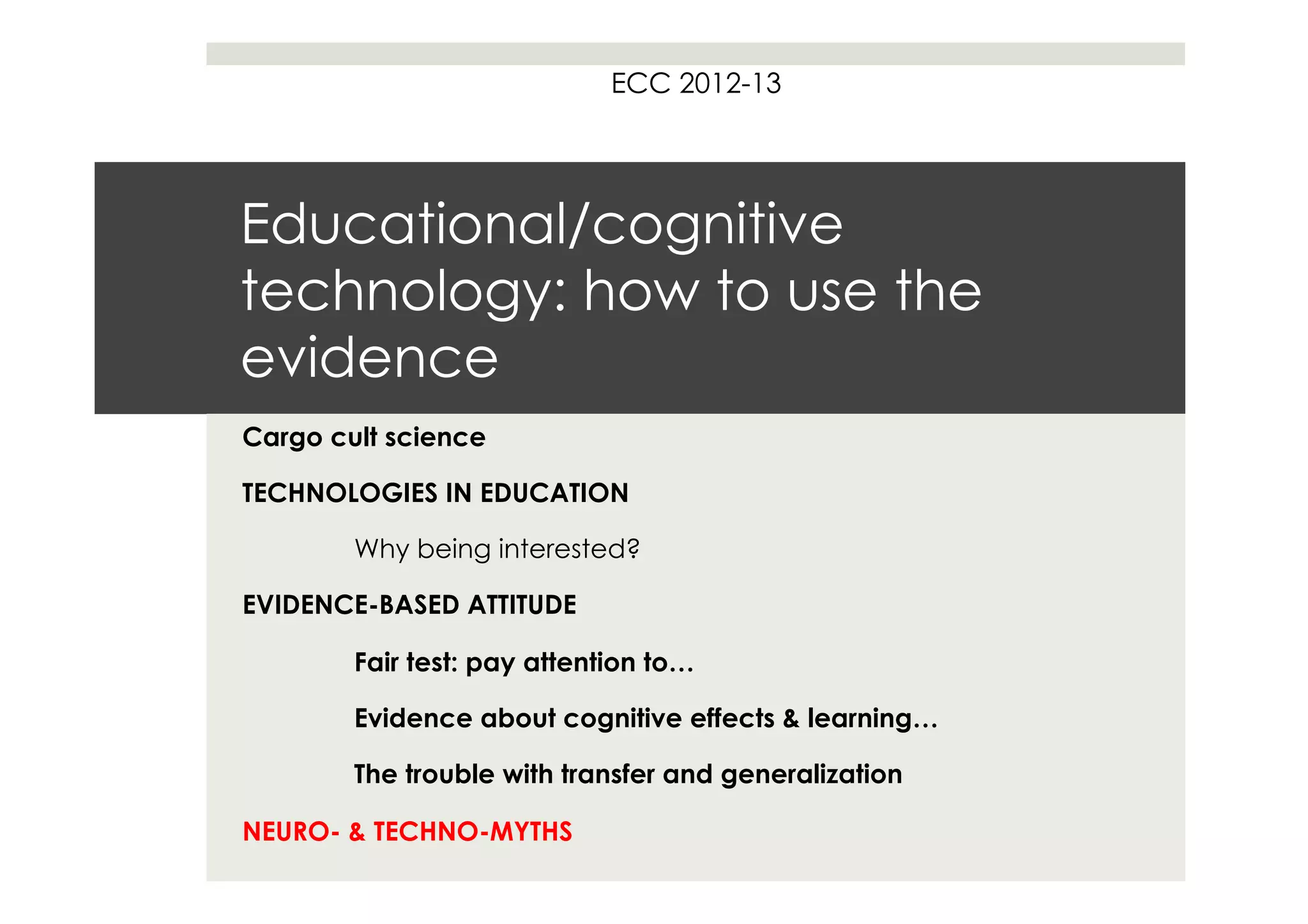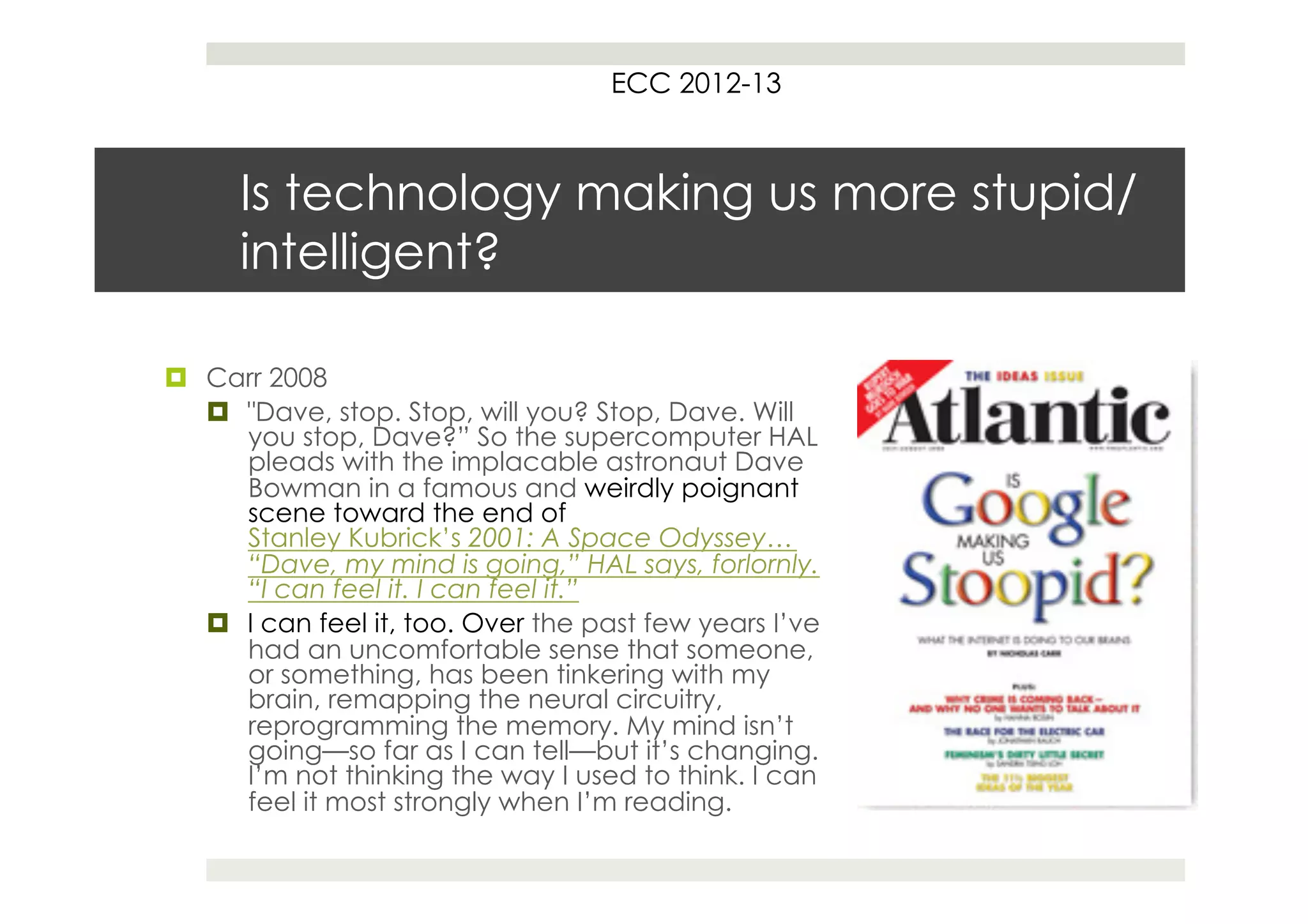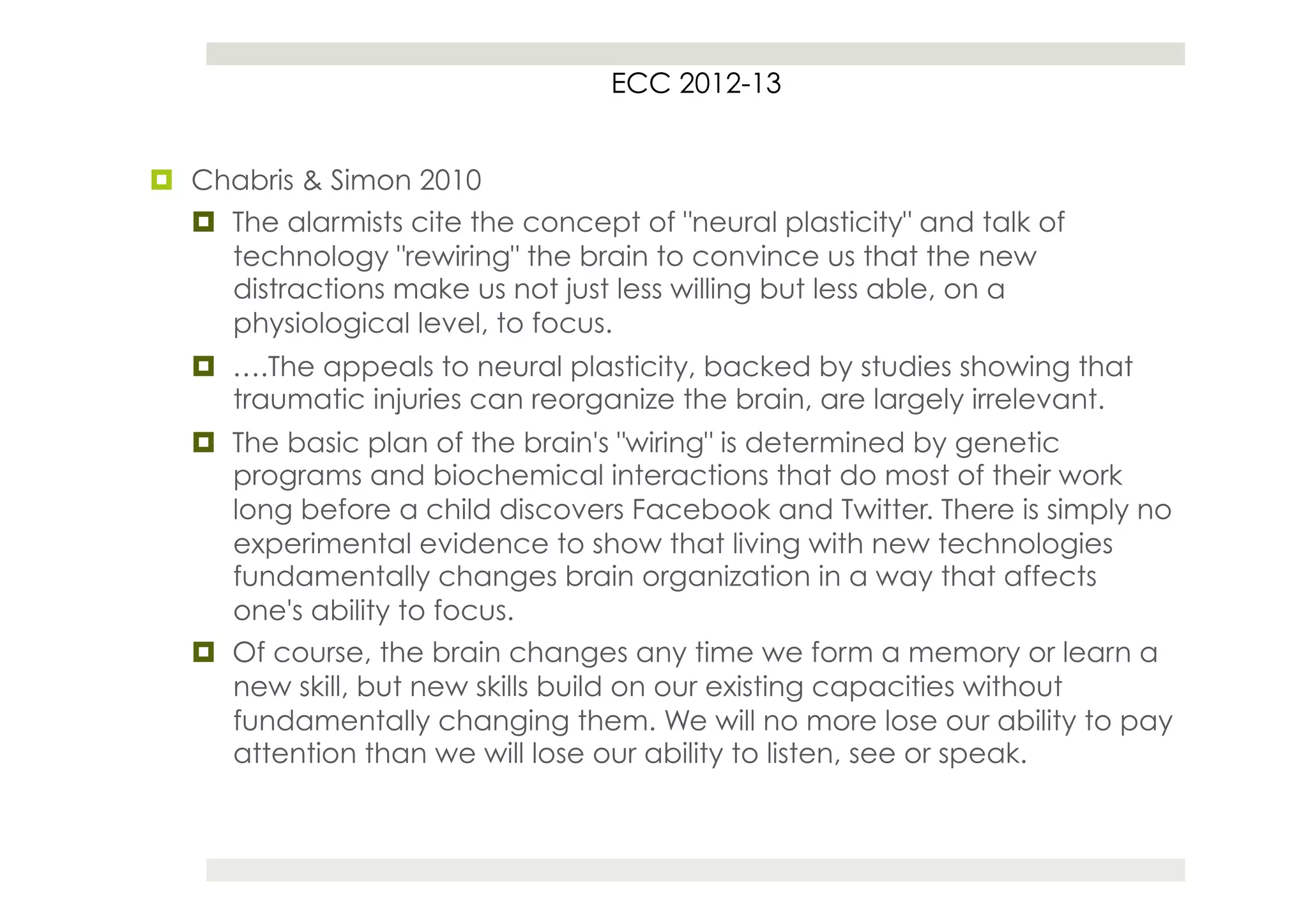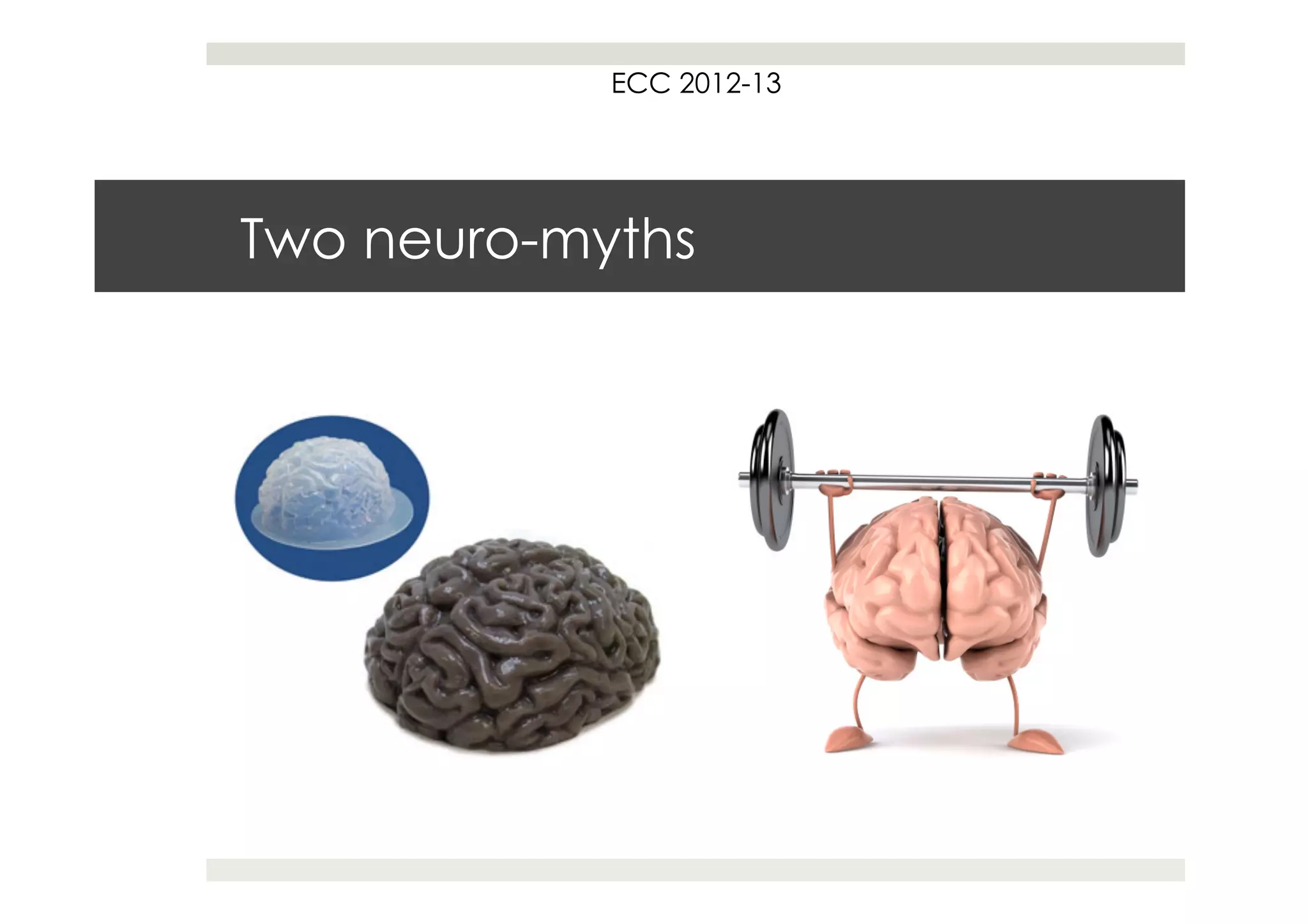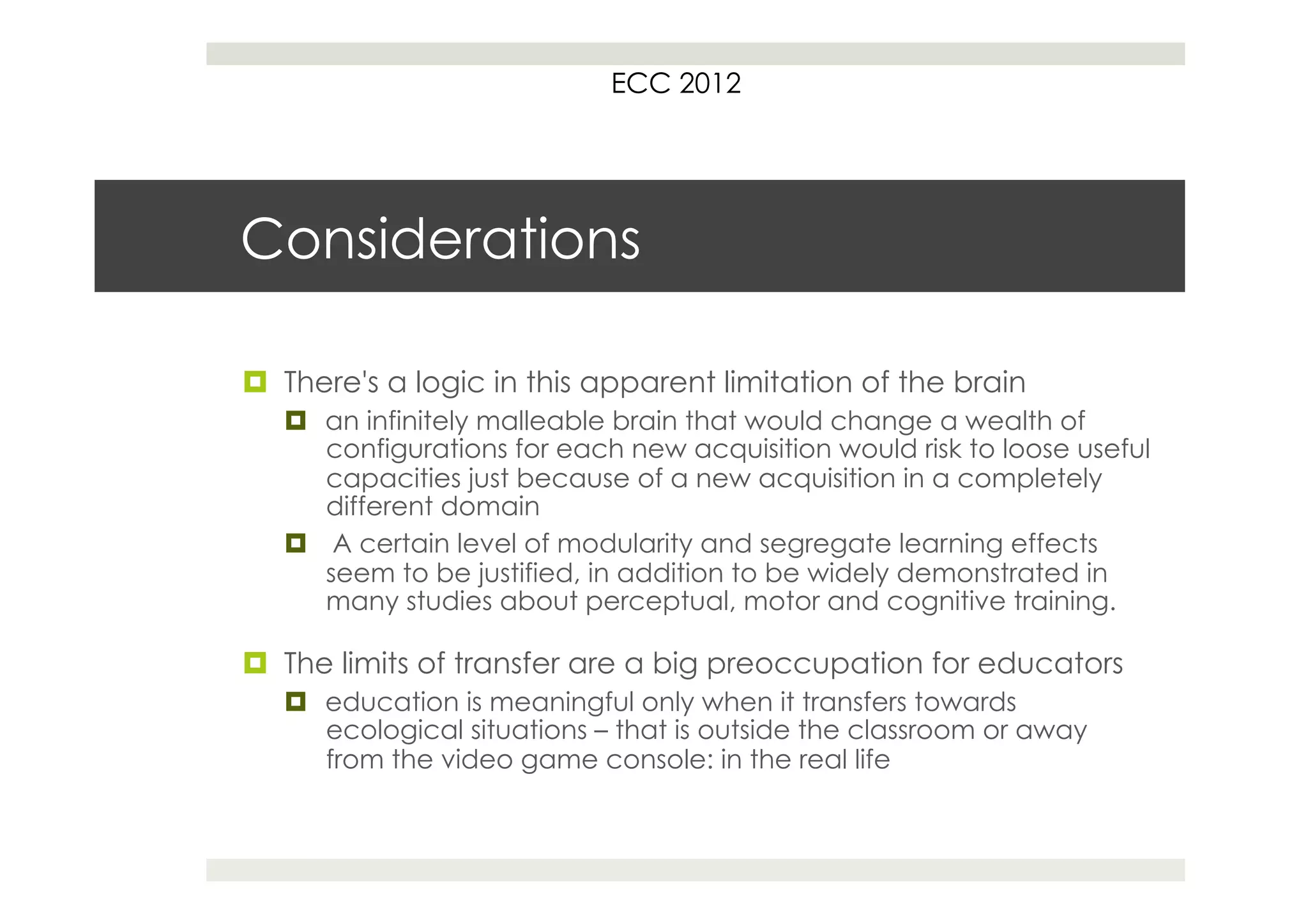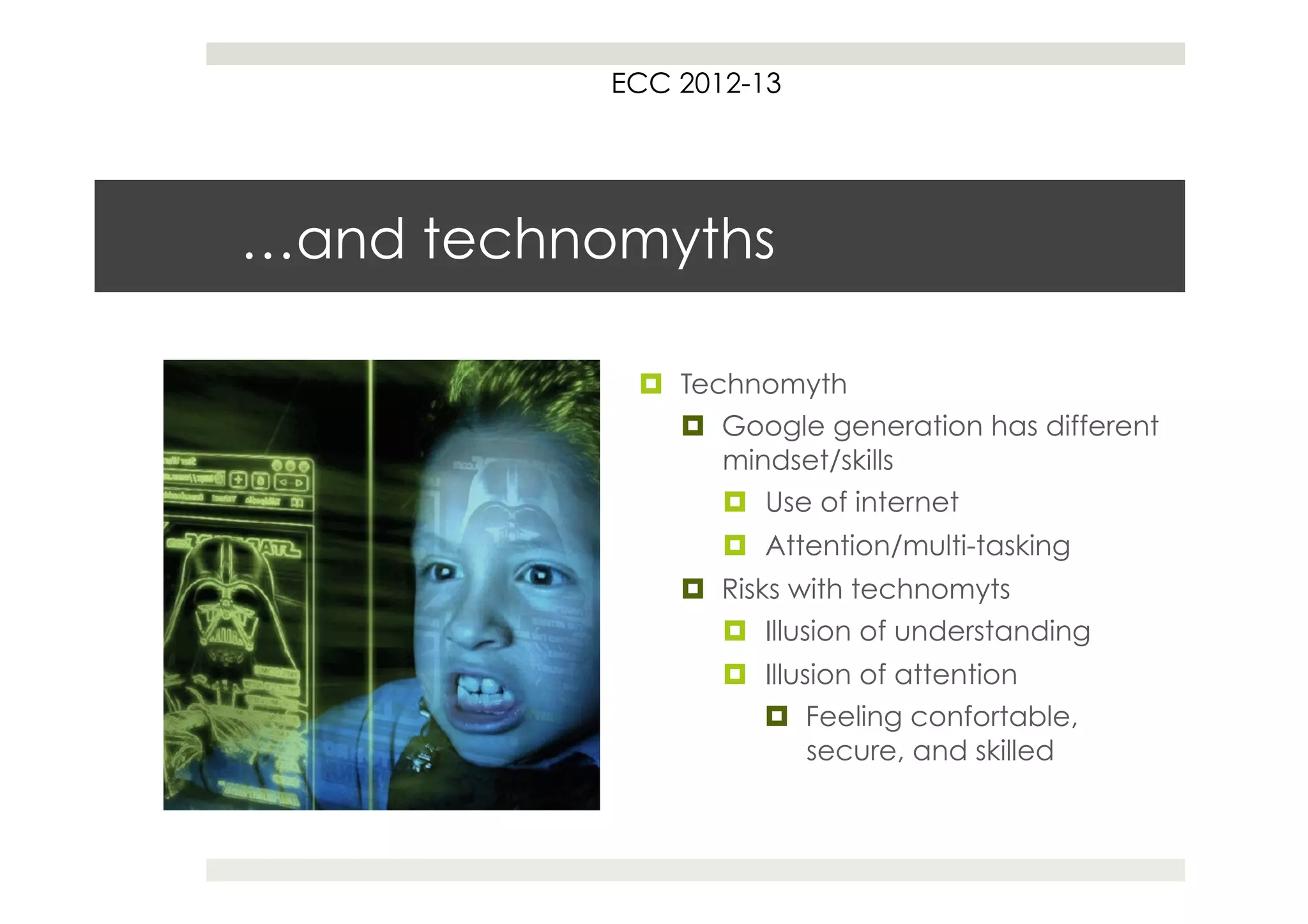This document discusses Richard Feynman's concept of "cargo cult science" and its application to education and psychology. Feynman was disappointed by the lack of rigor in studies of math education and viewed some areas of education and psychology as pseudoscience. The document describes an experiment by Young on rat behavior that demonstrated the importance of controlling for all variables, but subsequent studies failed to build on Young's findings. It argues that some educational research mimics scientific processes but lacks rigor, like cargo cults that imitate airports hoping to attract planes. New technologies in education are also discussed along with concerns about their cognitive impacts and claims of changing student minds.

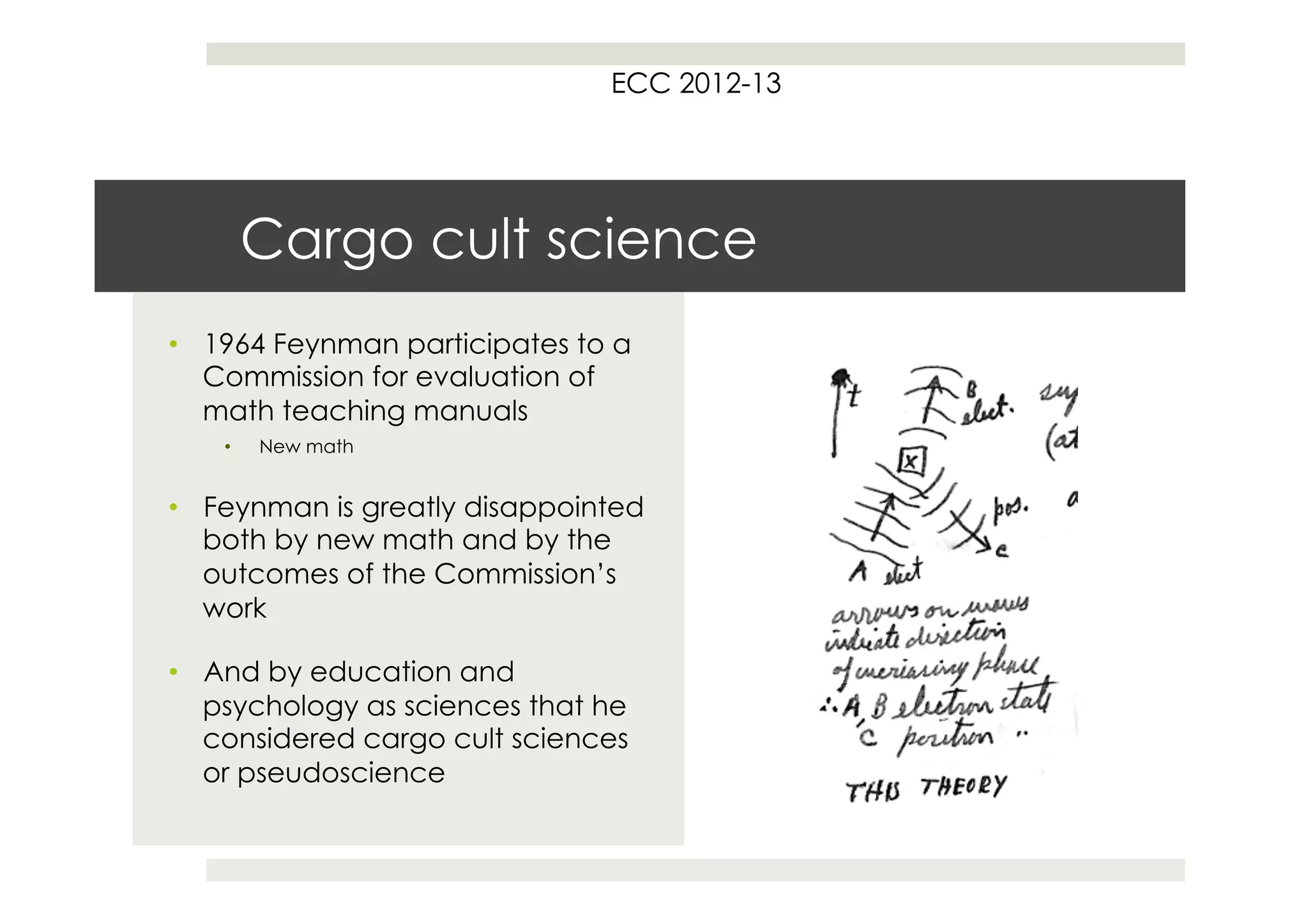
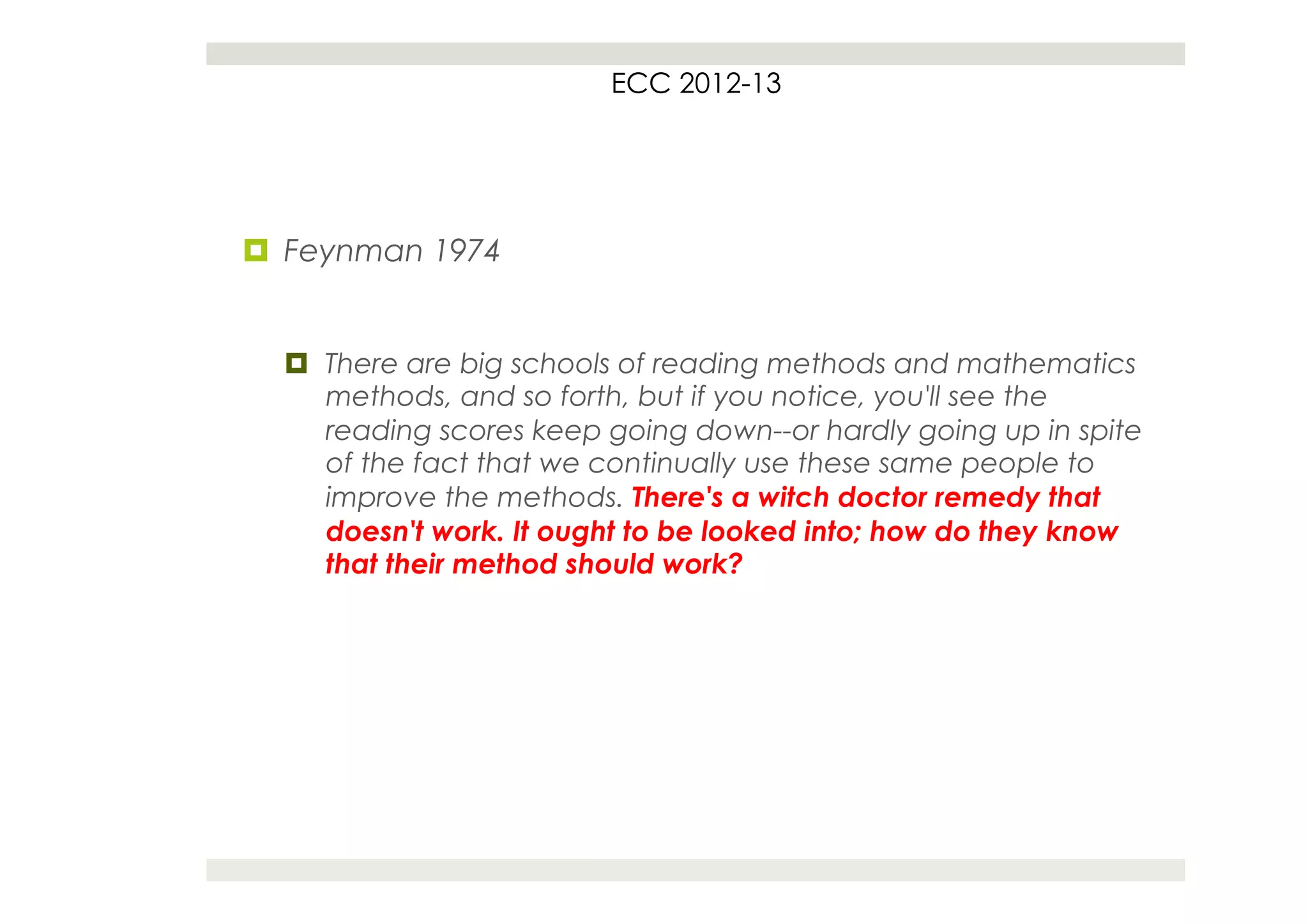
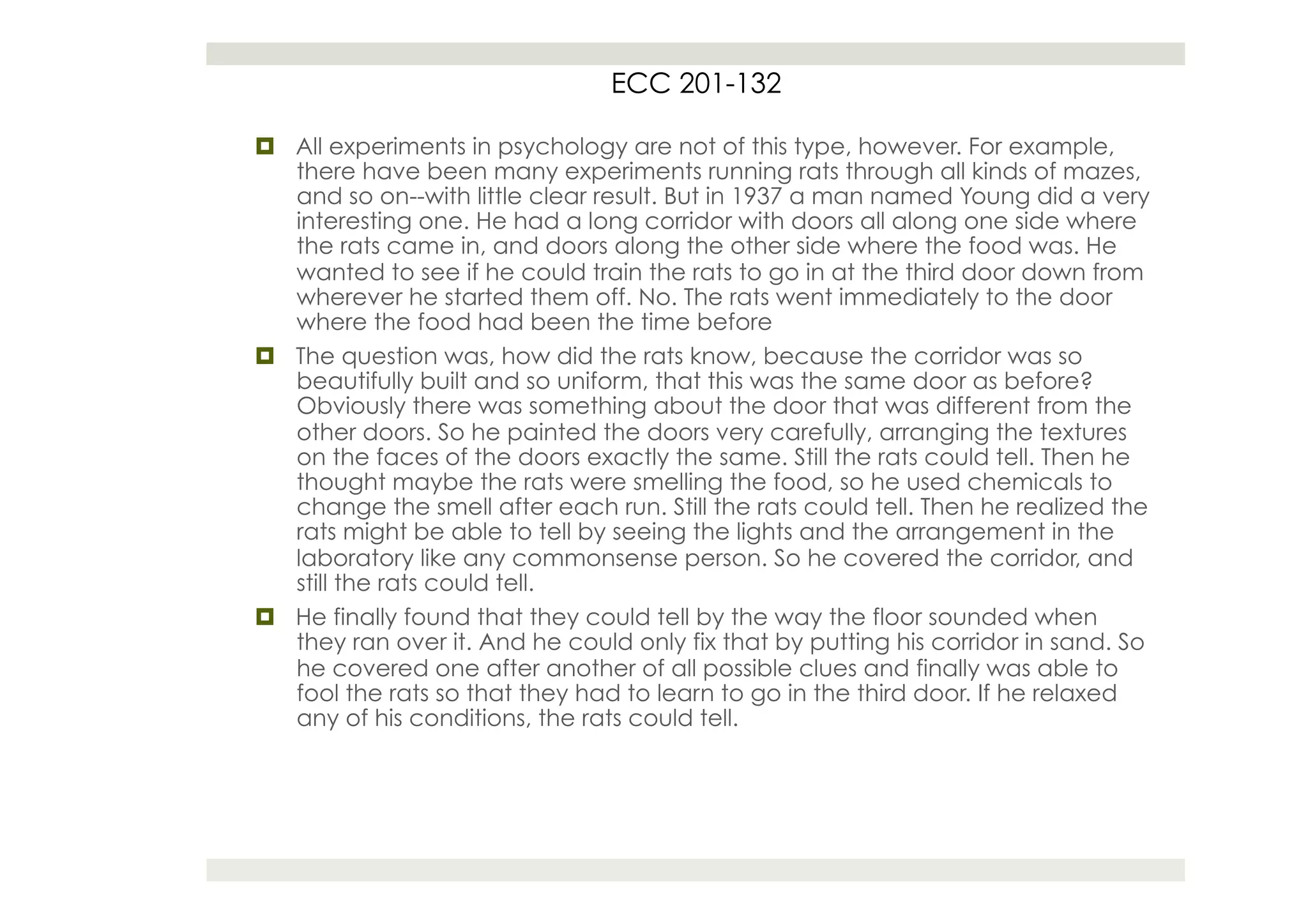
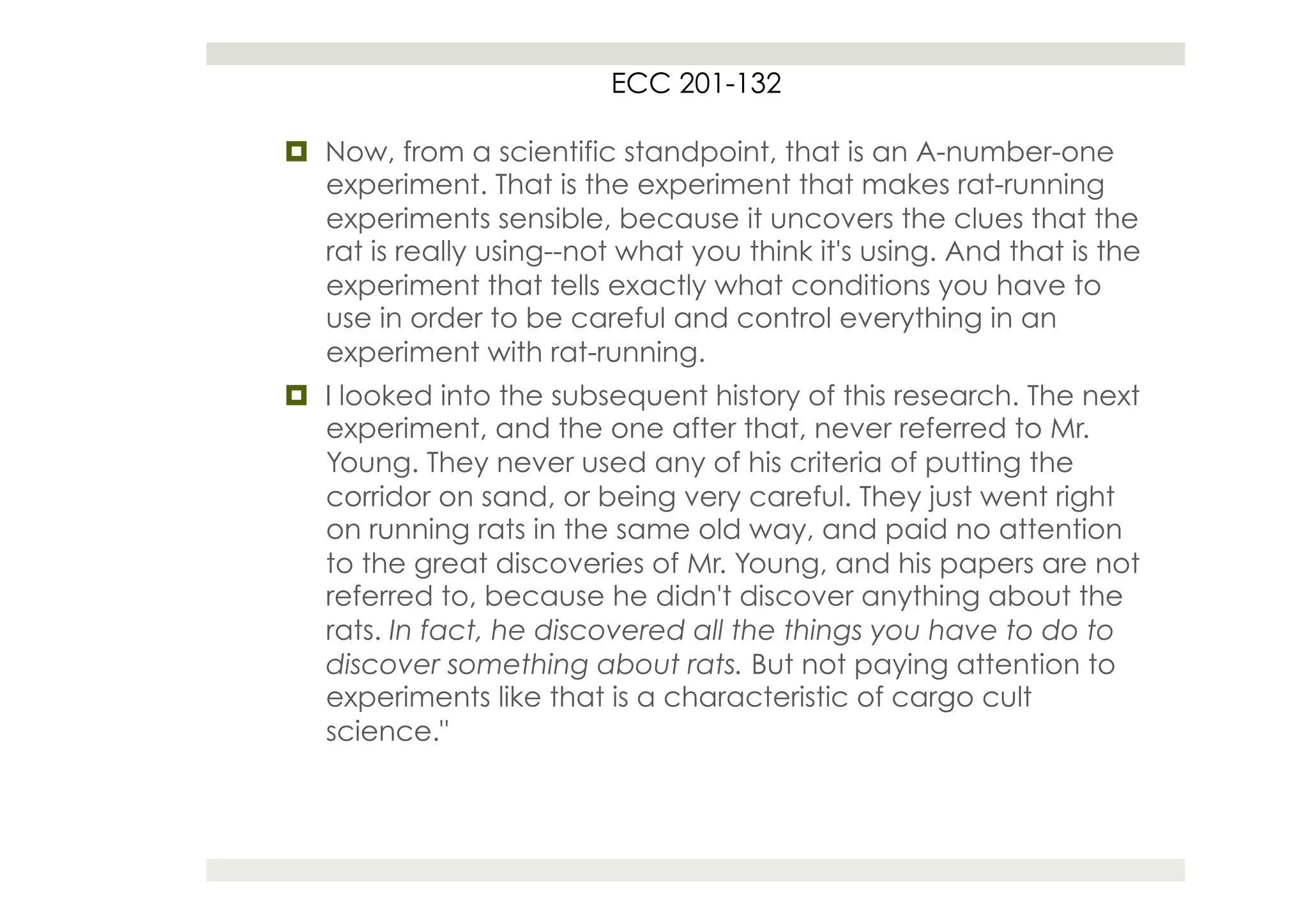
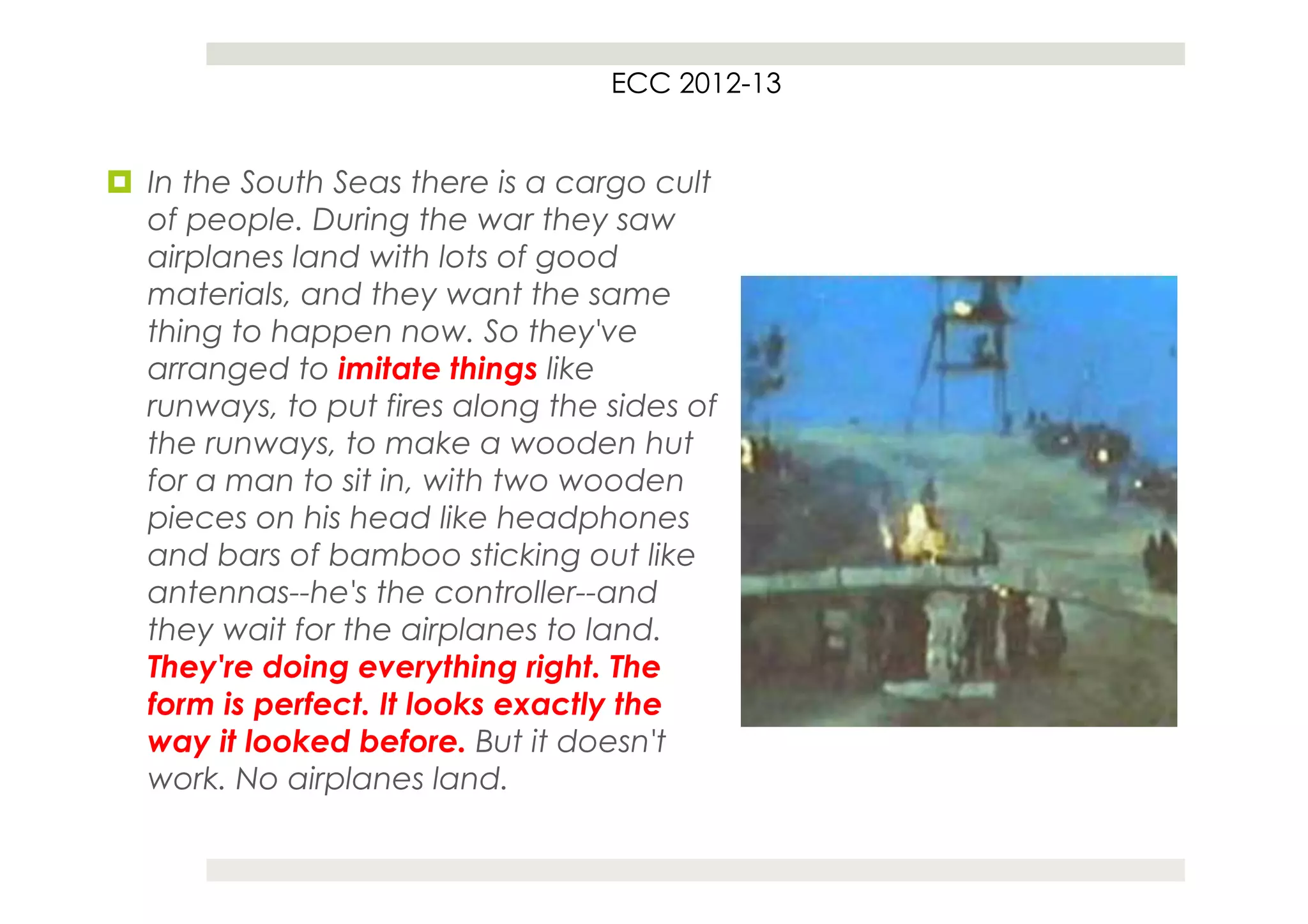
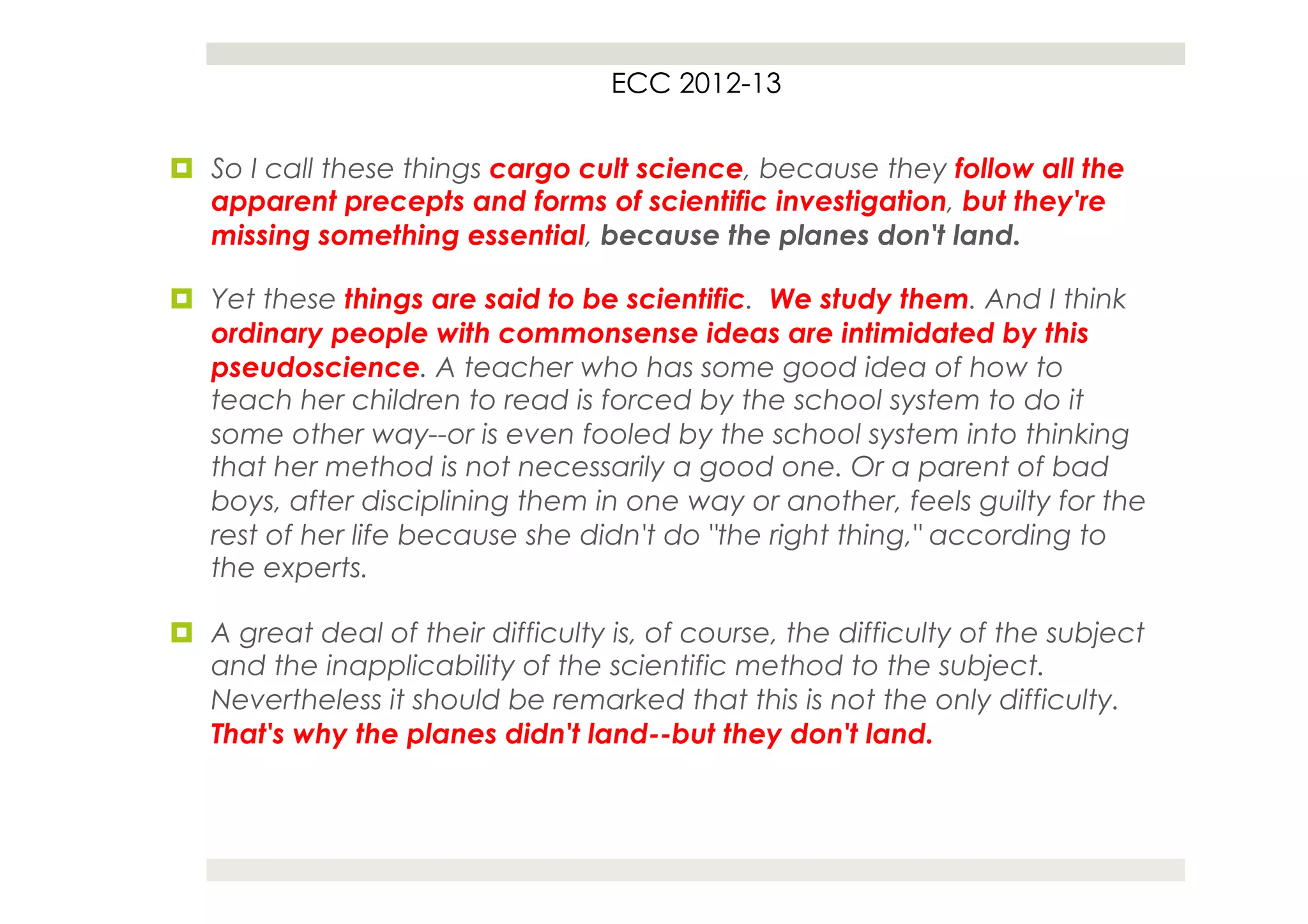
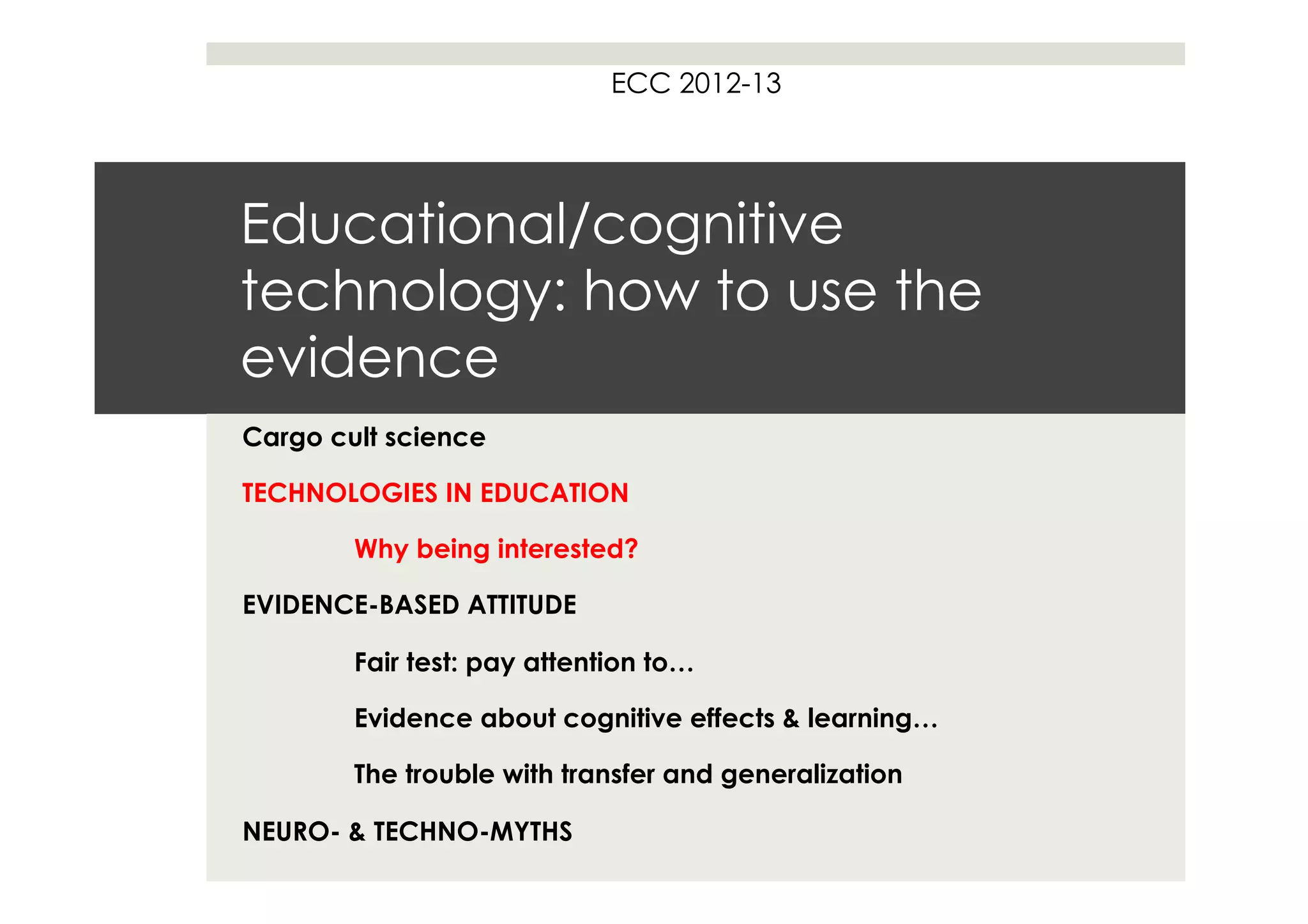
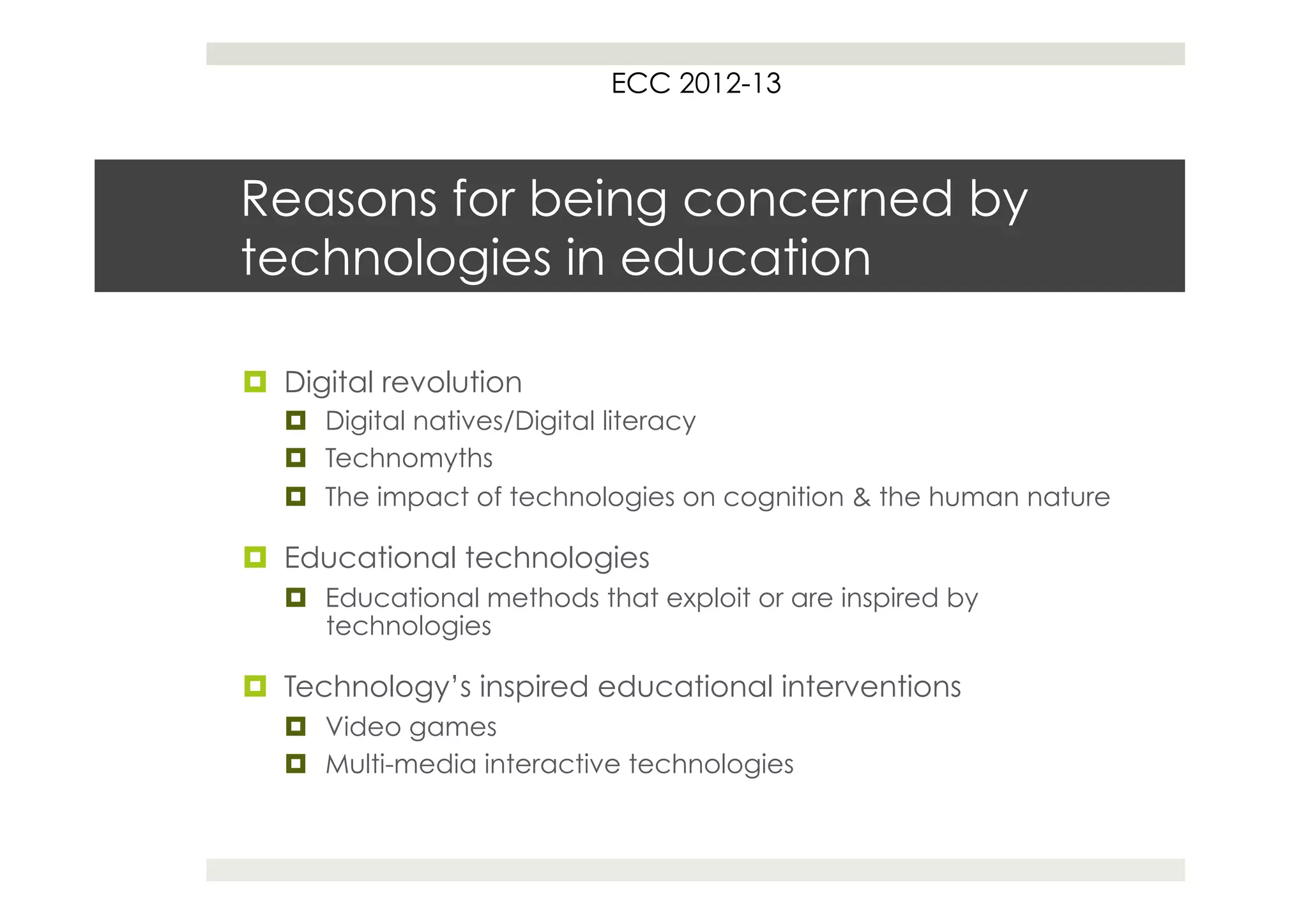

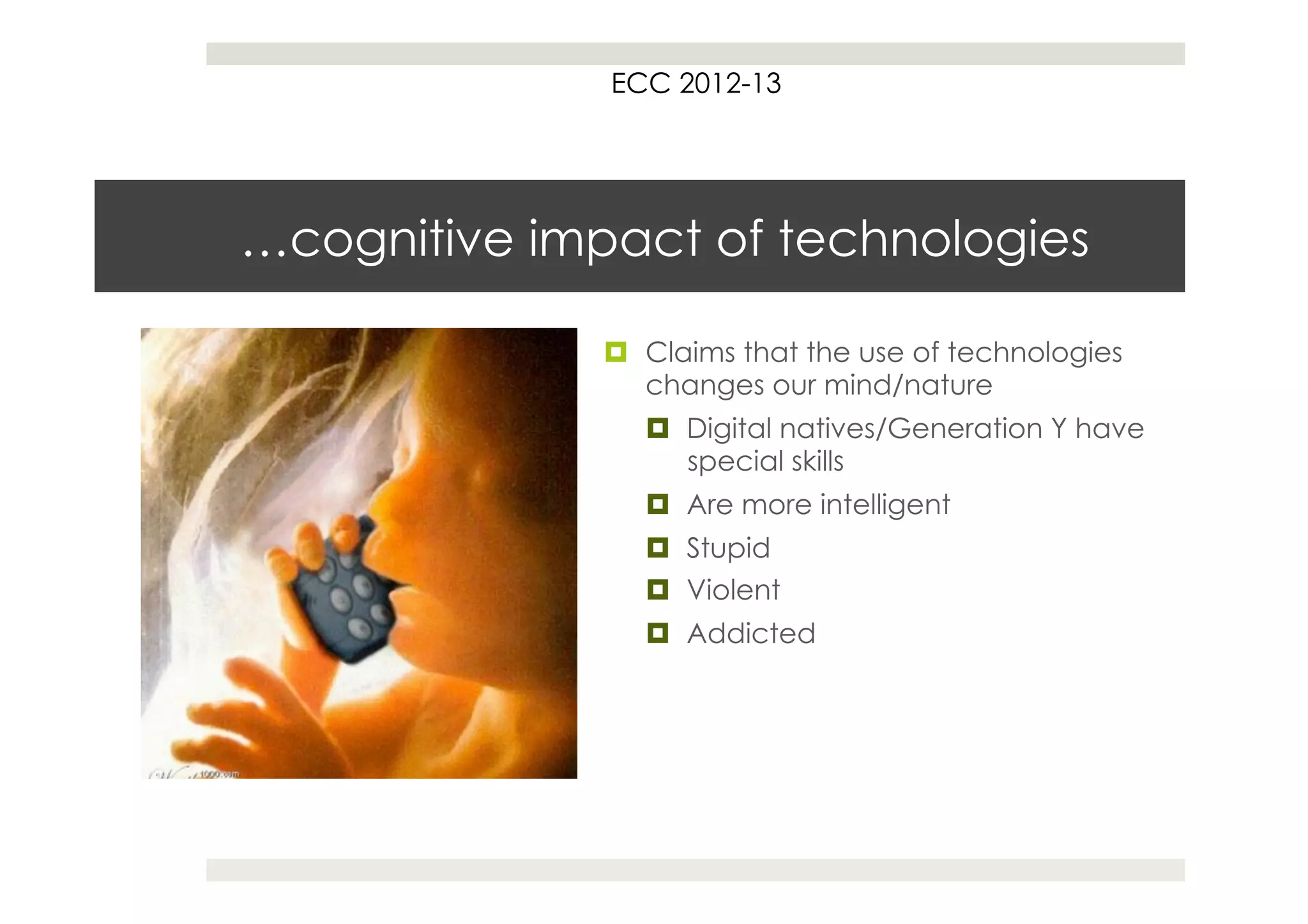
![ECC 2012-13
¤ Prensky 2001
¤ What should we call these “new” students of today? Some
refer to them as the N-[for Net]-gen or D-[for digital]-gen. But
the most useful designation I have found for them is Digital
Natives. Our students today are all “native speakers” of the
digital language of computers, video games and the Internet.
¤ So what does that make the rest of us? Those of us who were
not born into the digital world but have, at some later point in
our lives, become fascinated by and adopted many or most
aspects of the new technology are, and always will be
compared to them, Digital Immigrants.](https://image.slidesharecdn.com/ecc2012-135-120906152318-phpapp02/75/Ecc2012-13-5-12-2048.jpg)

